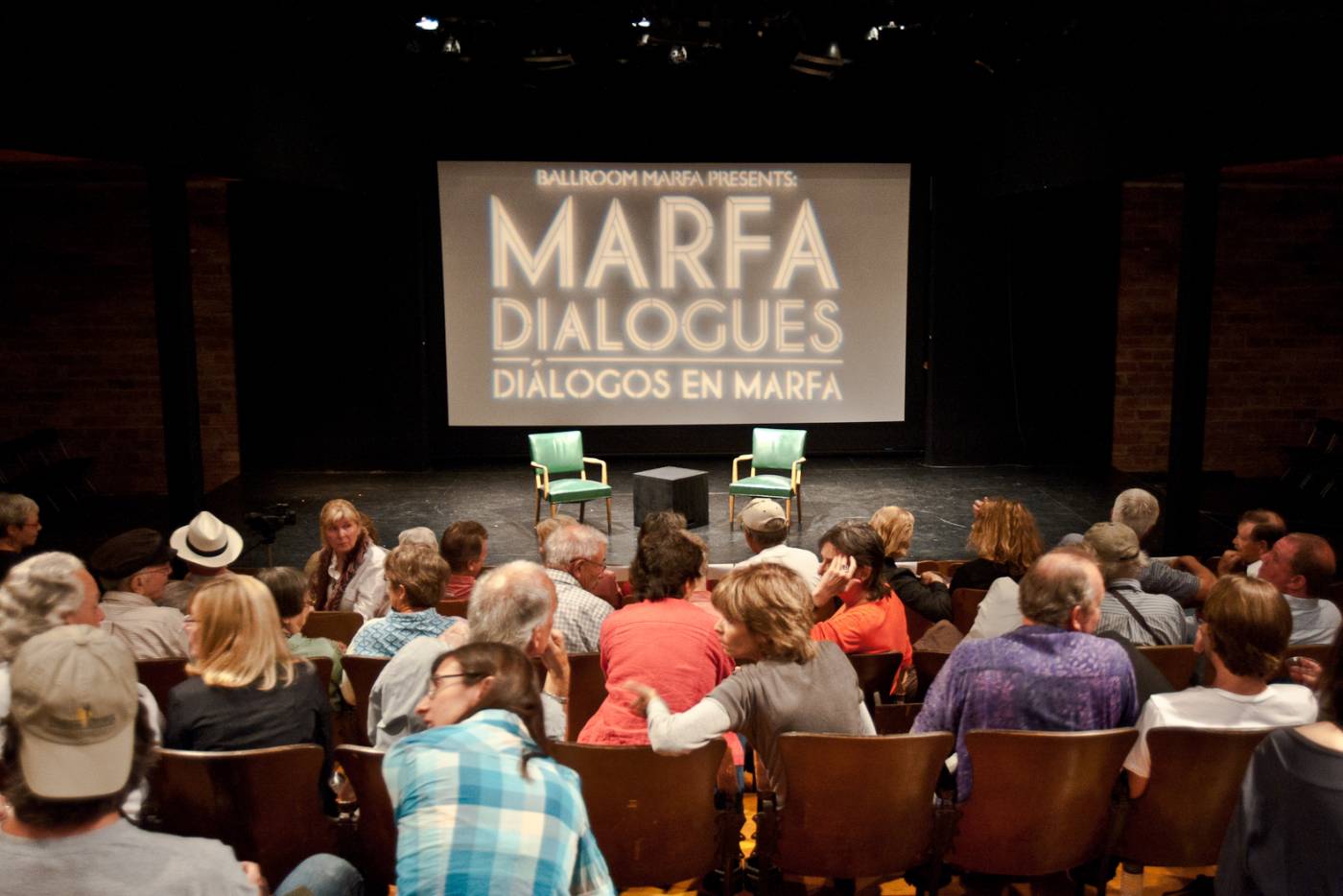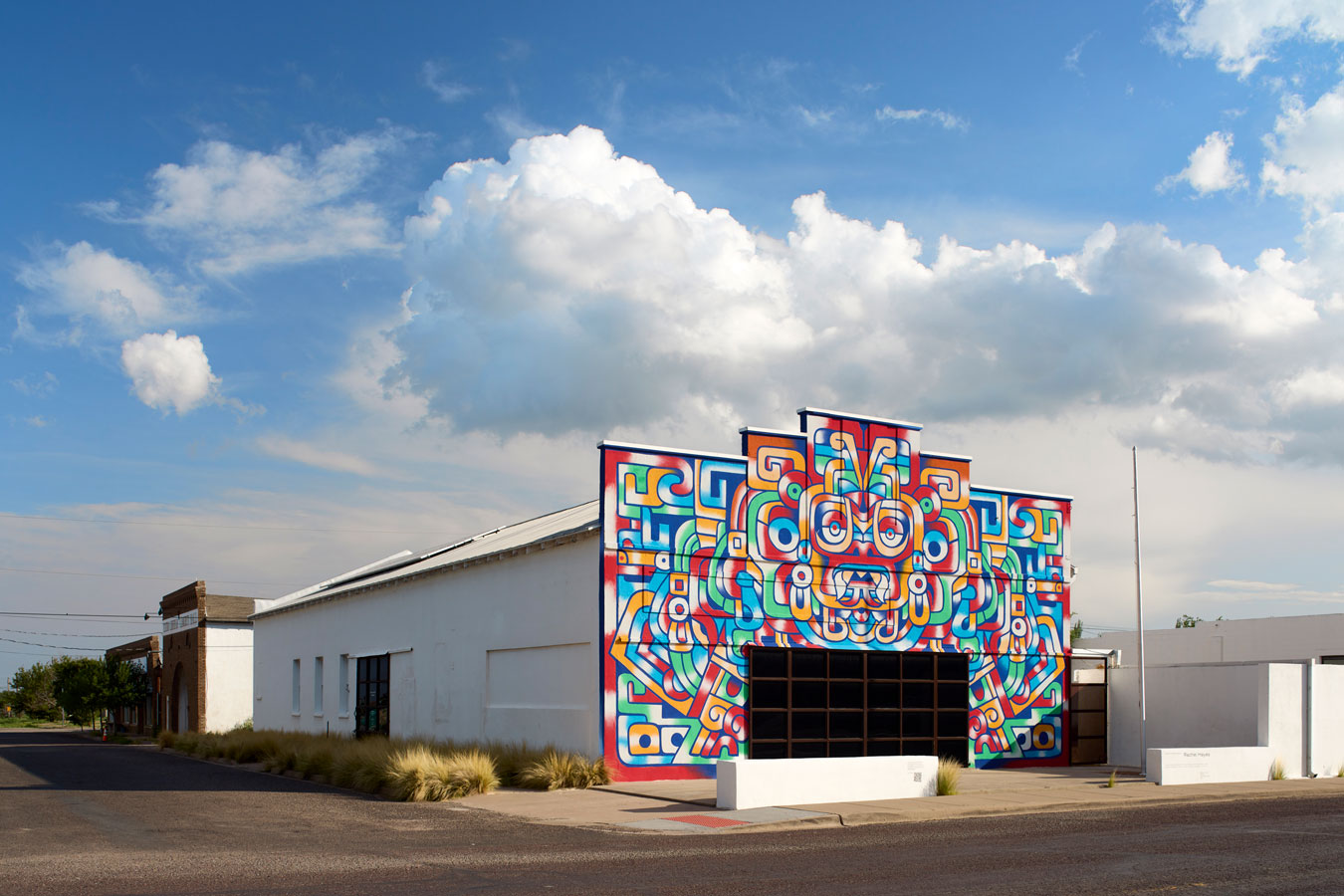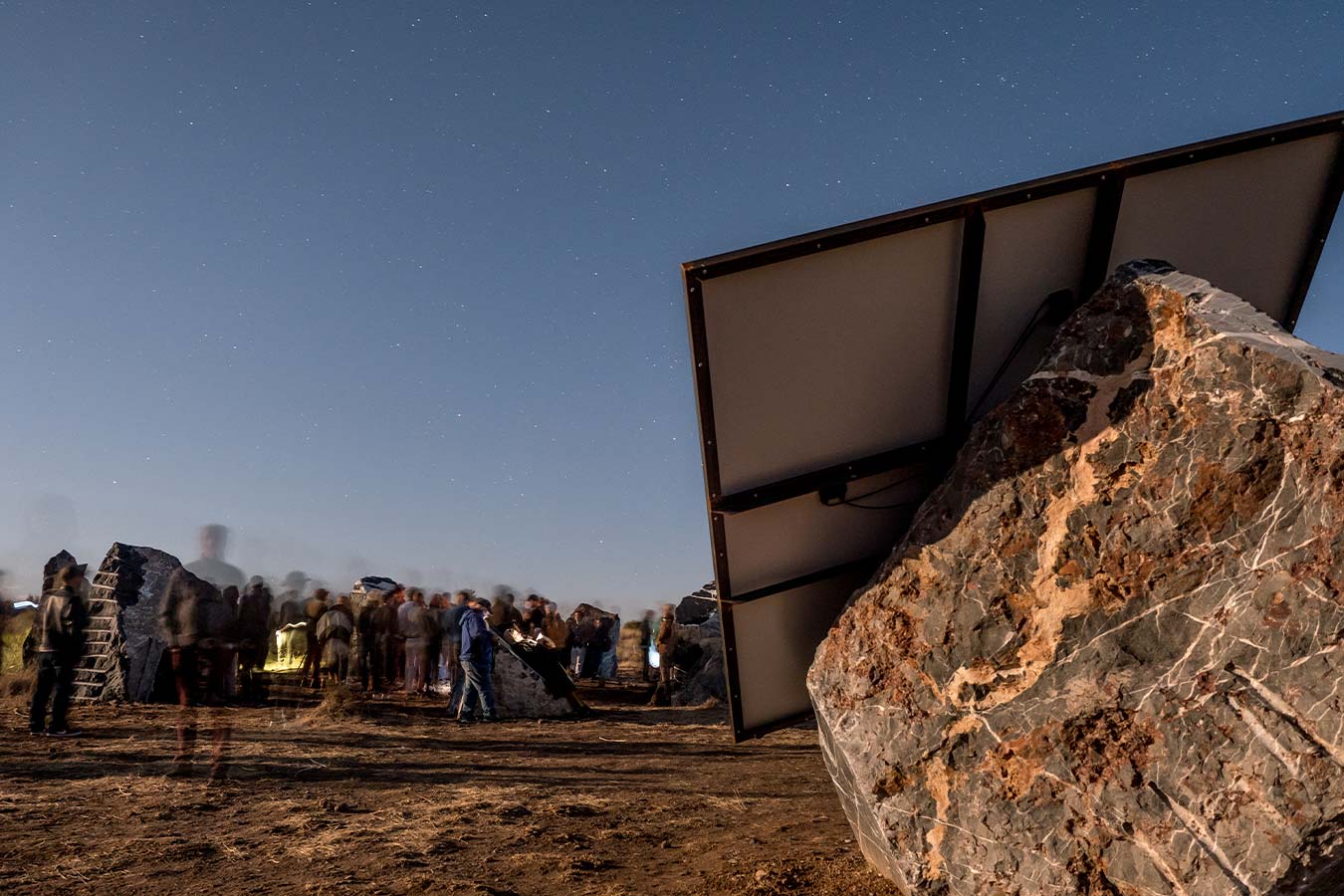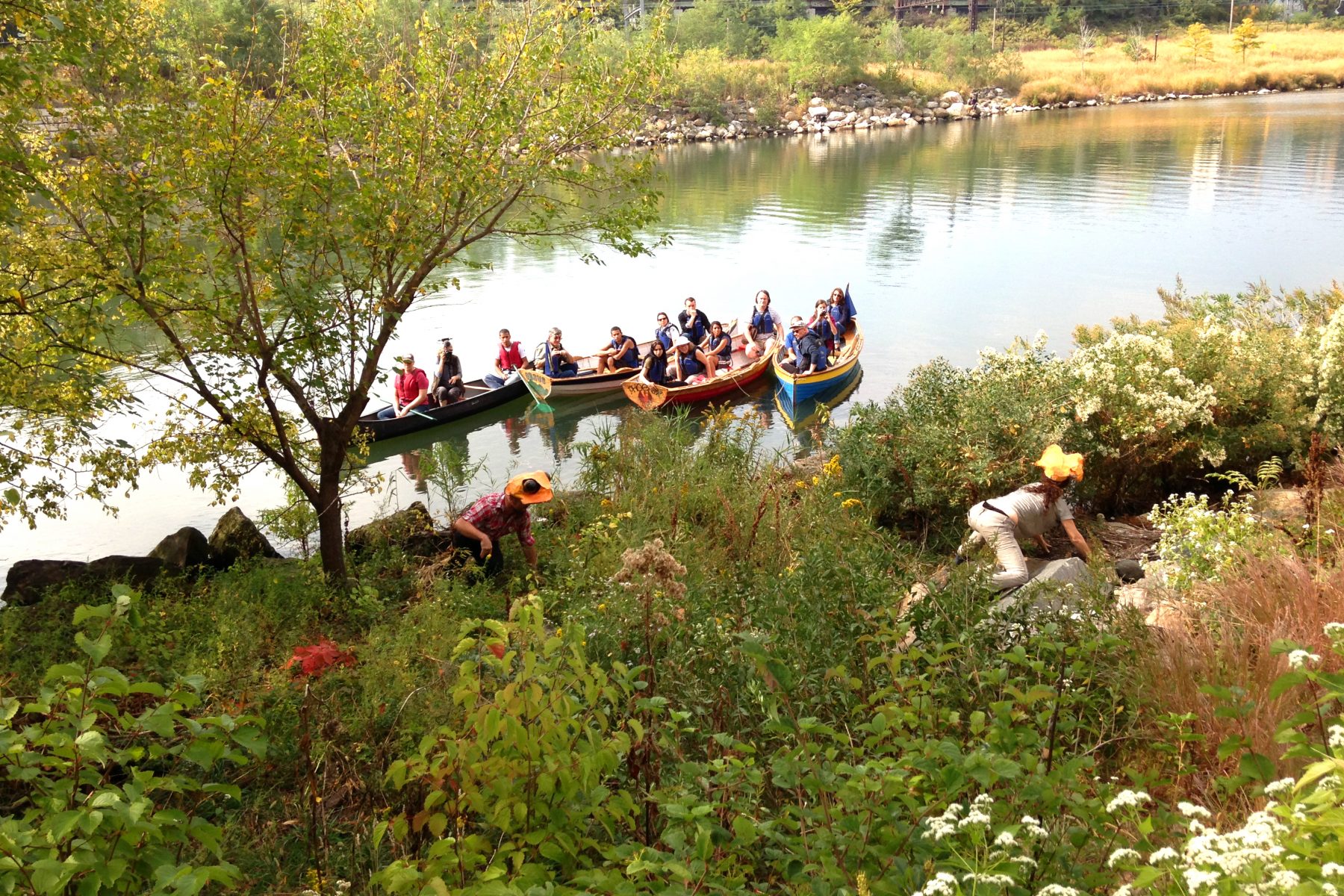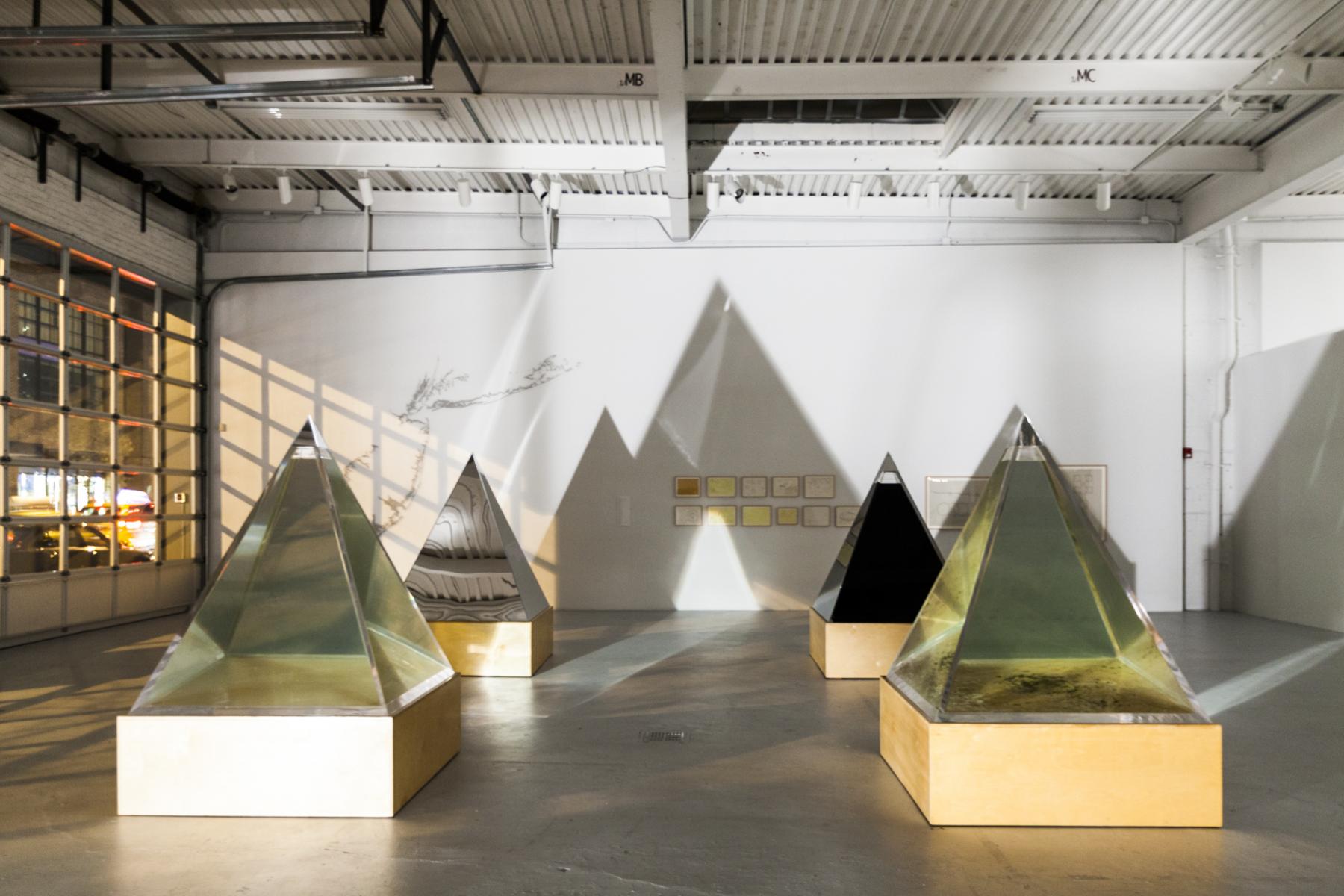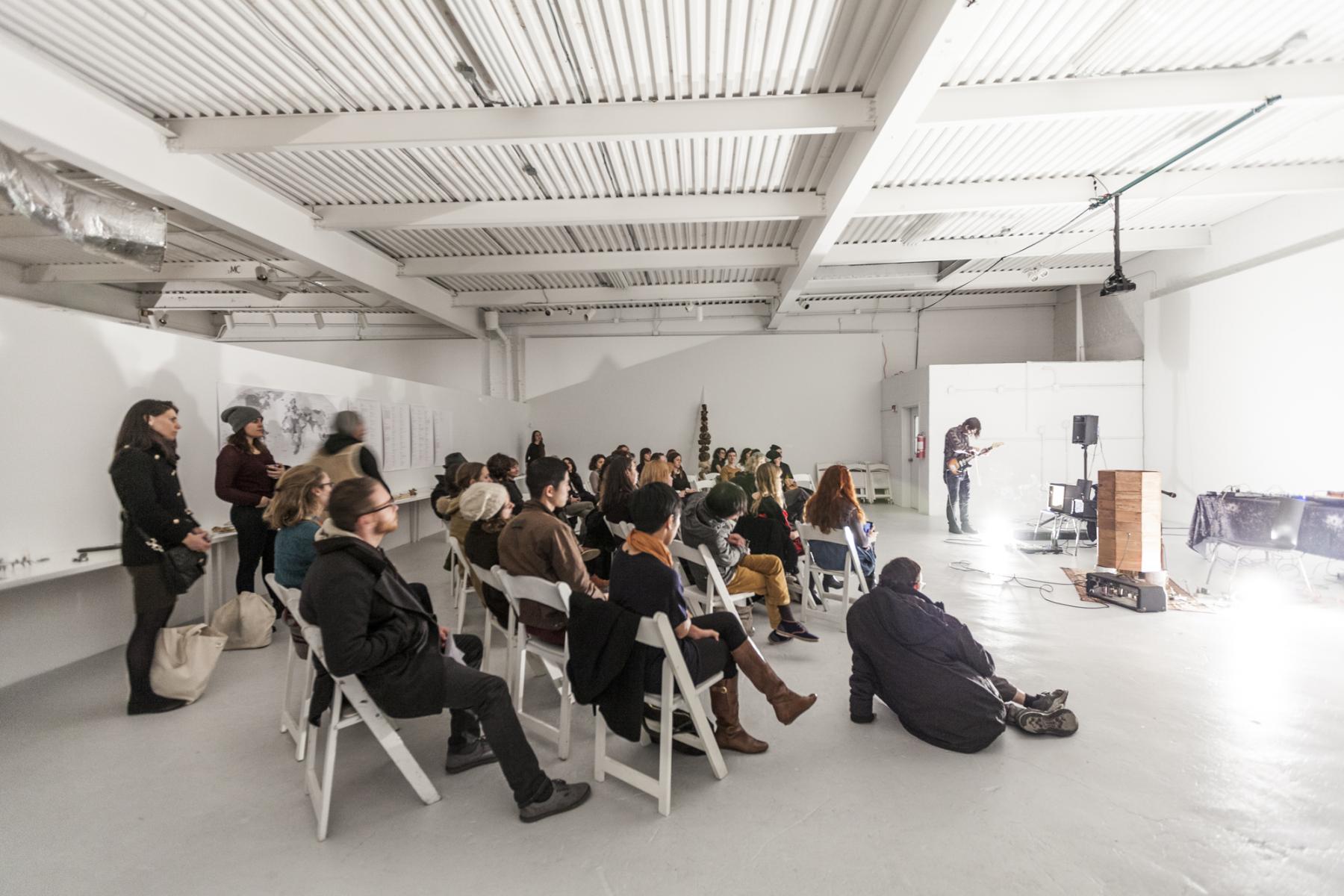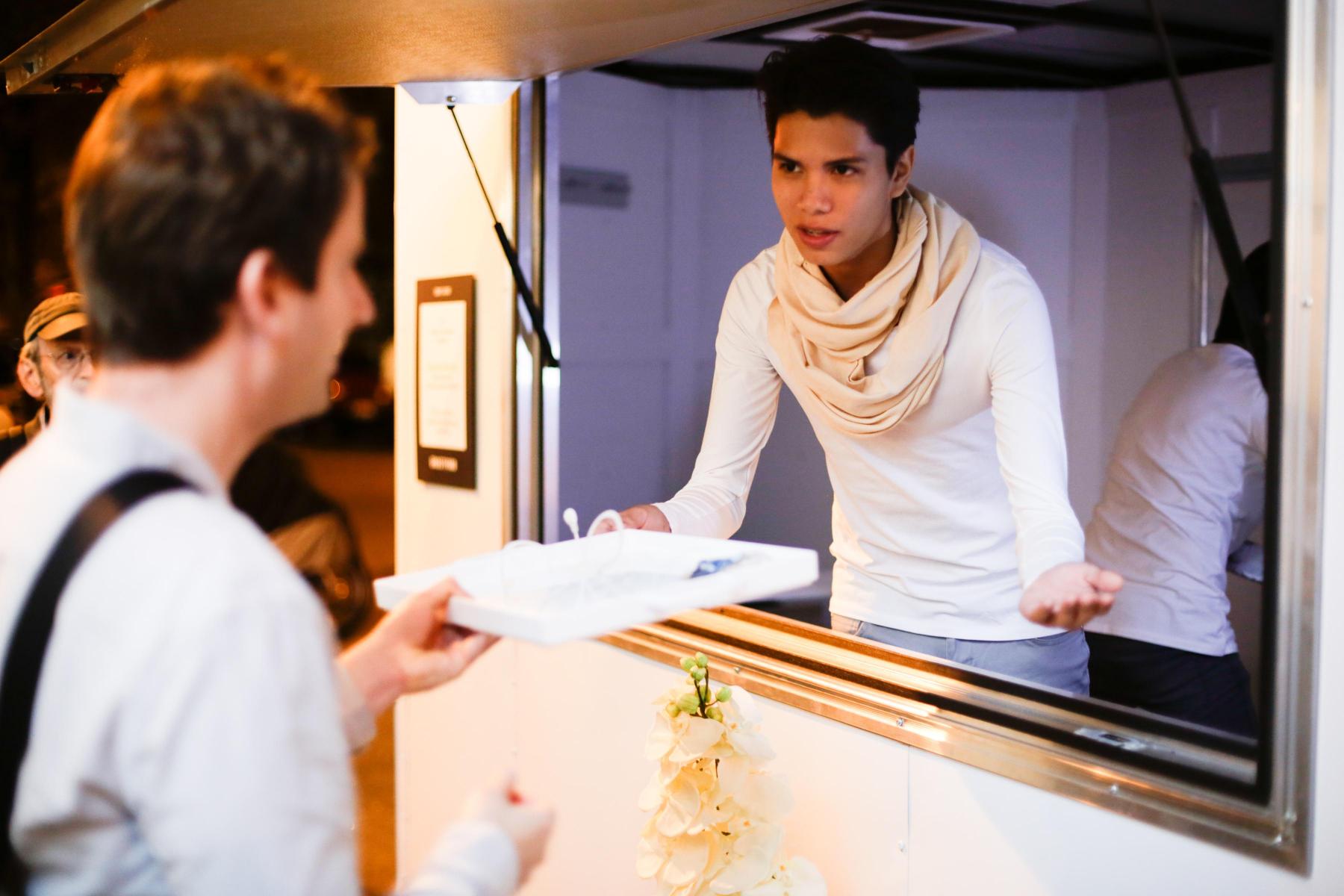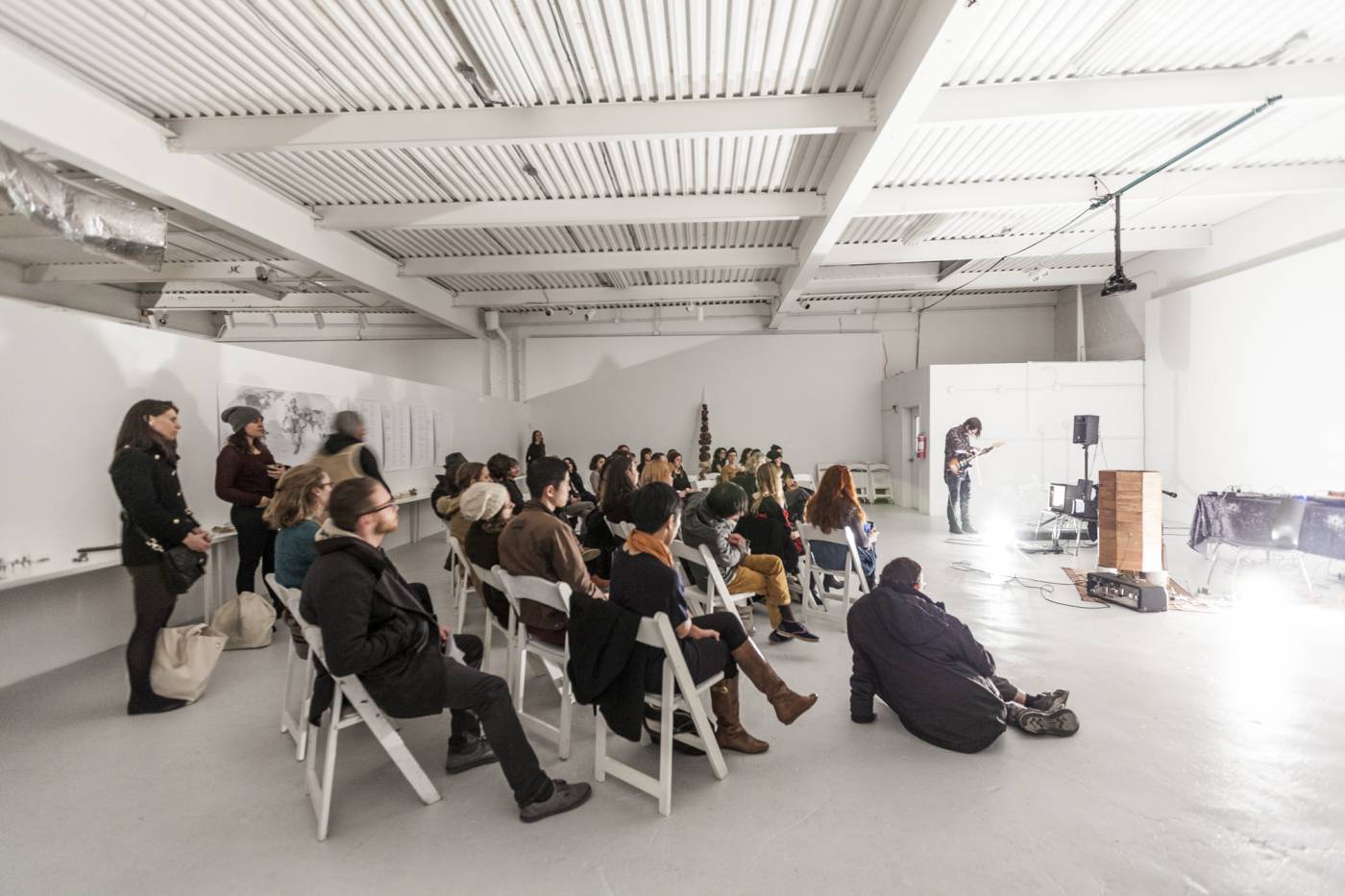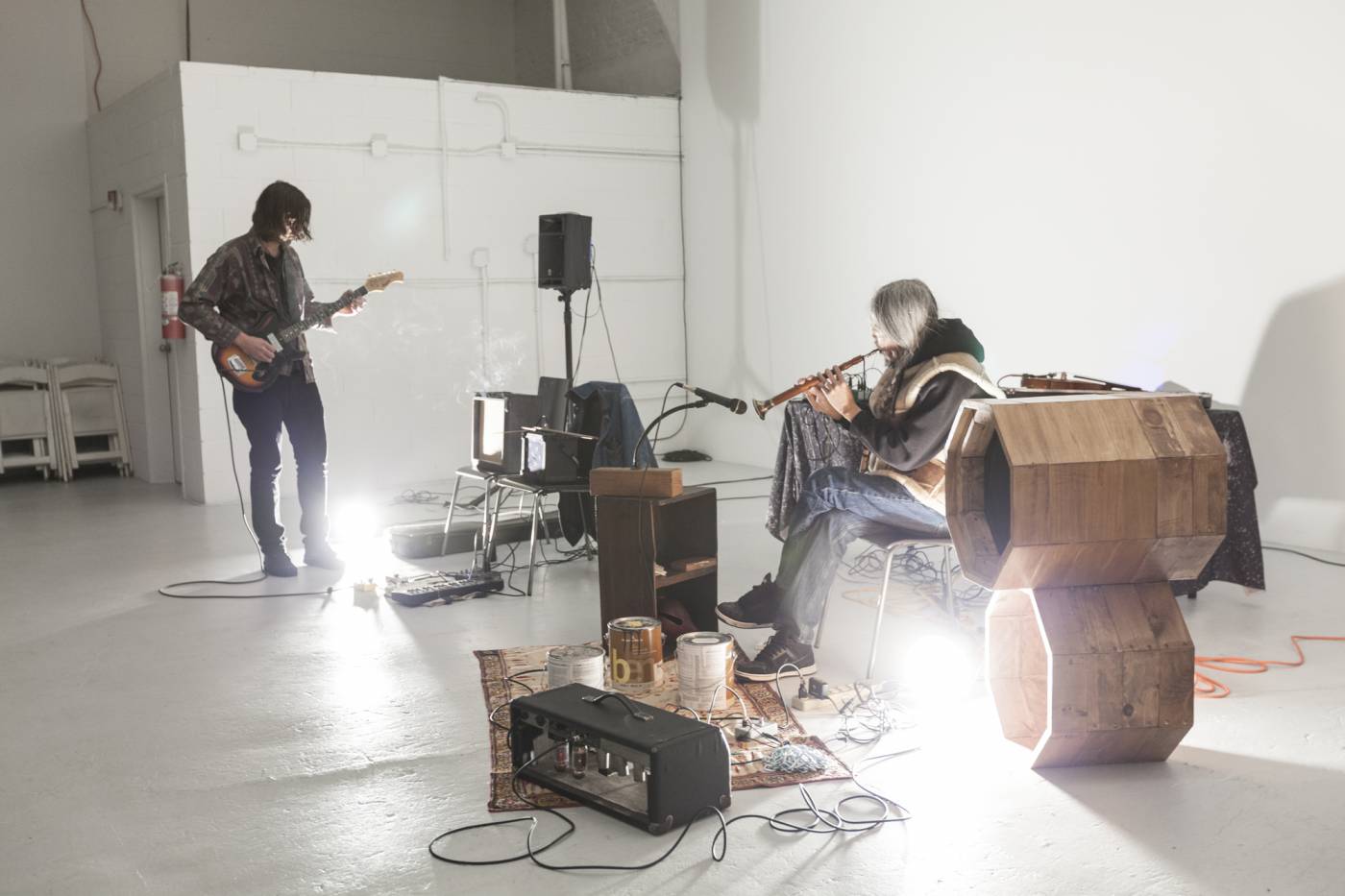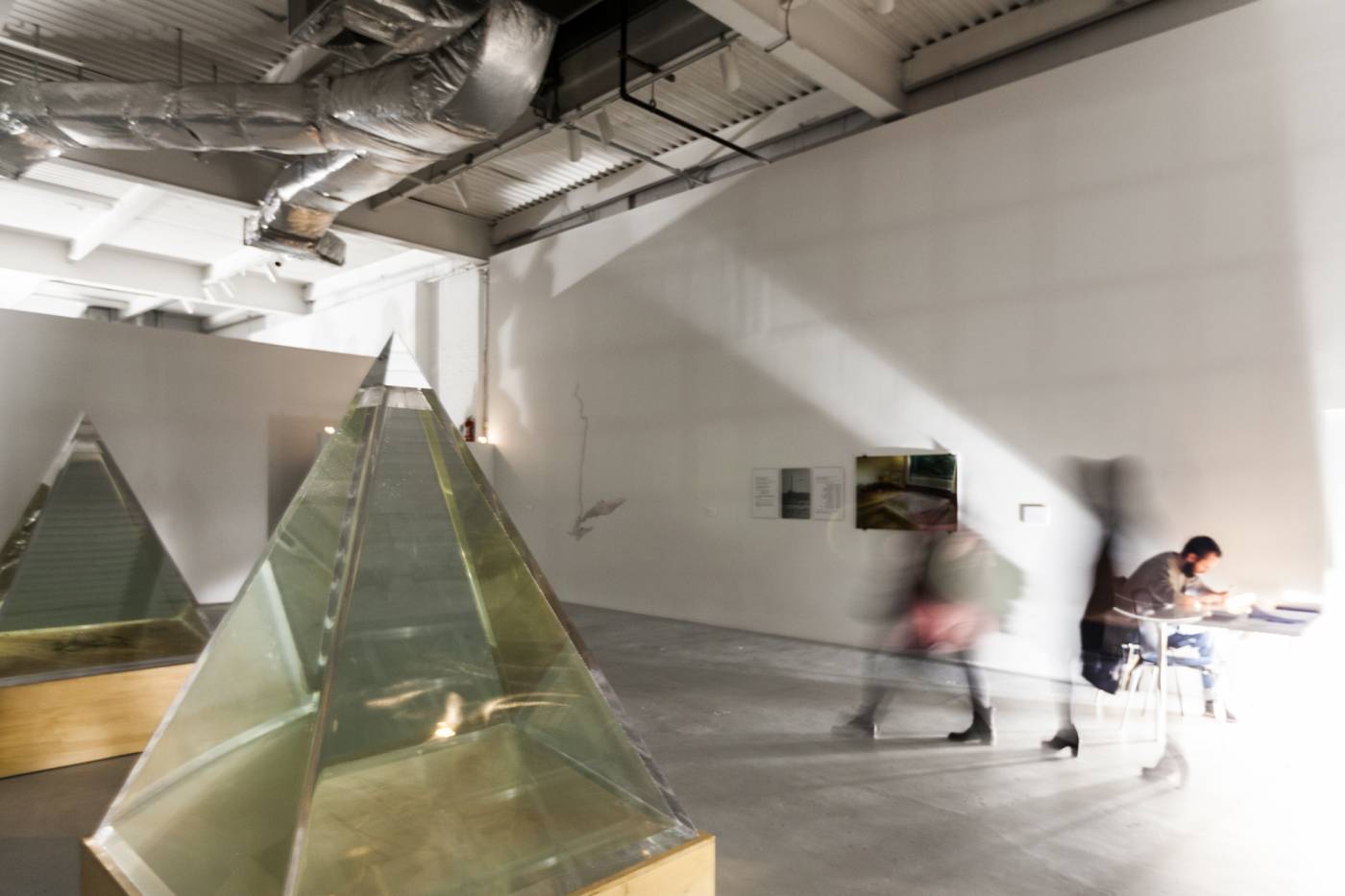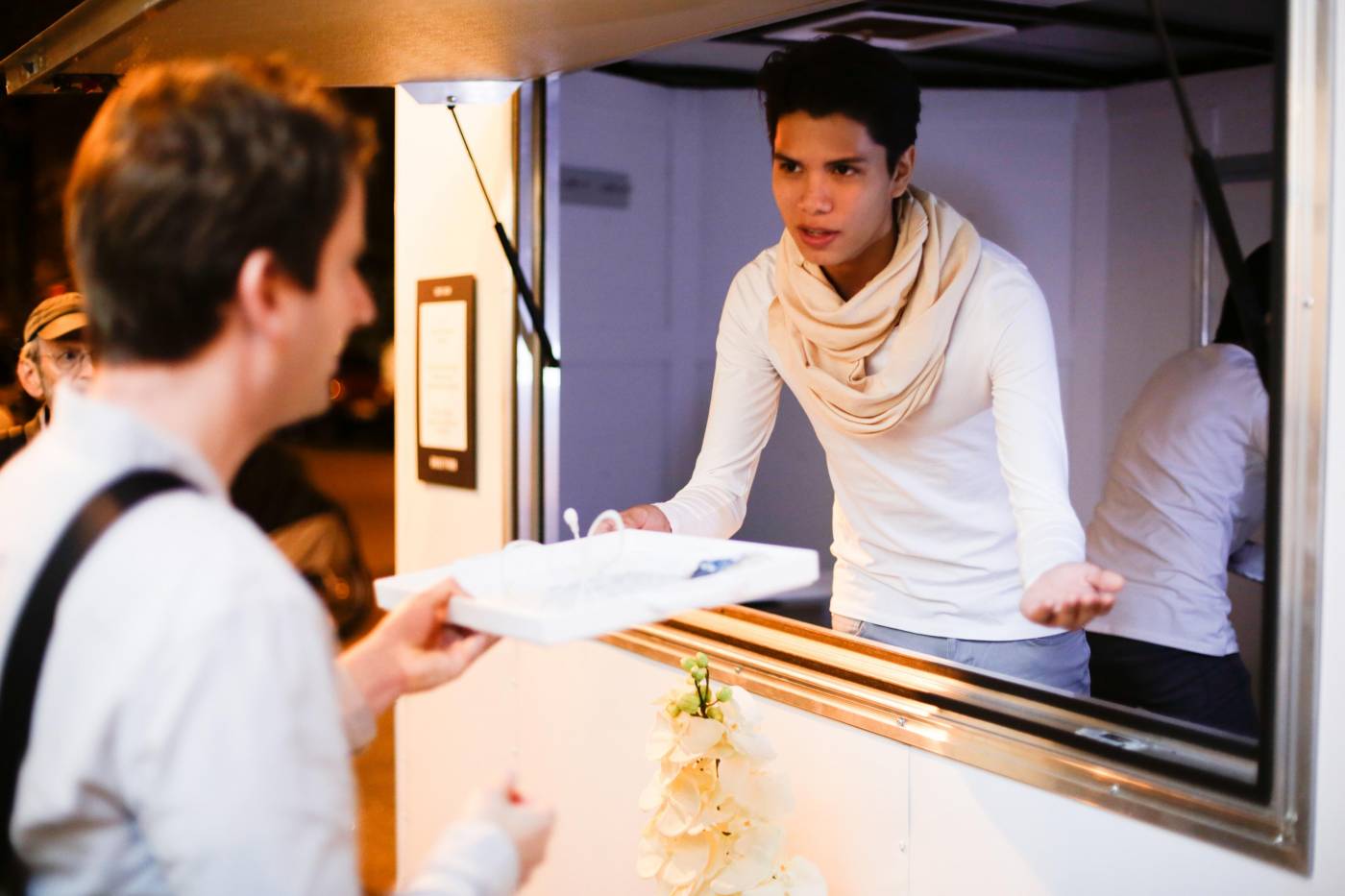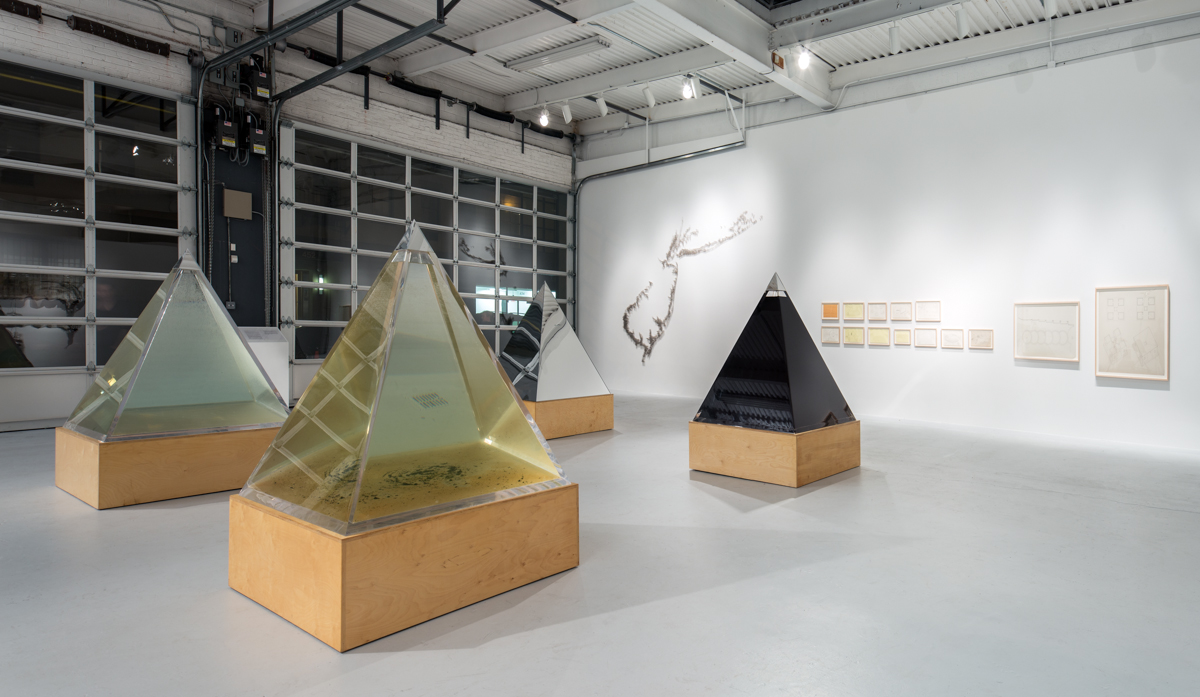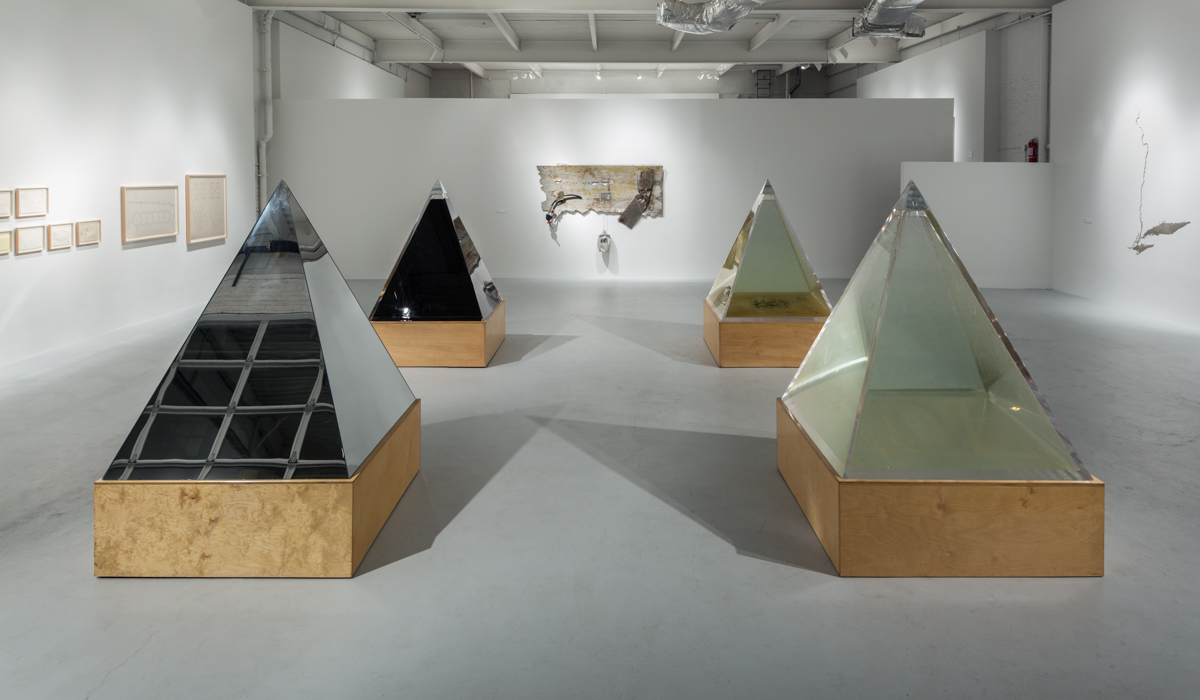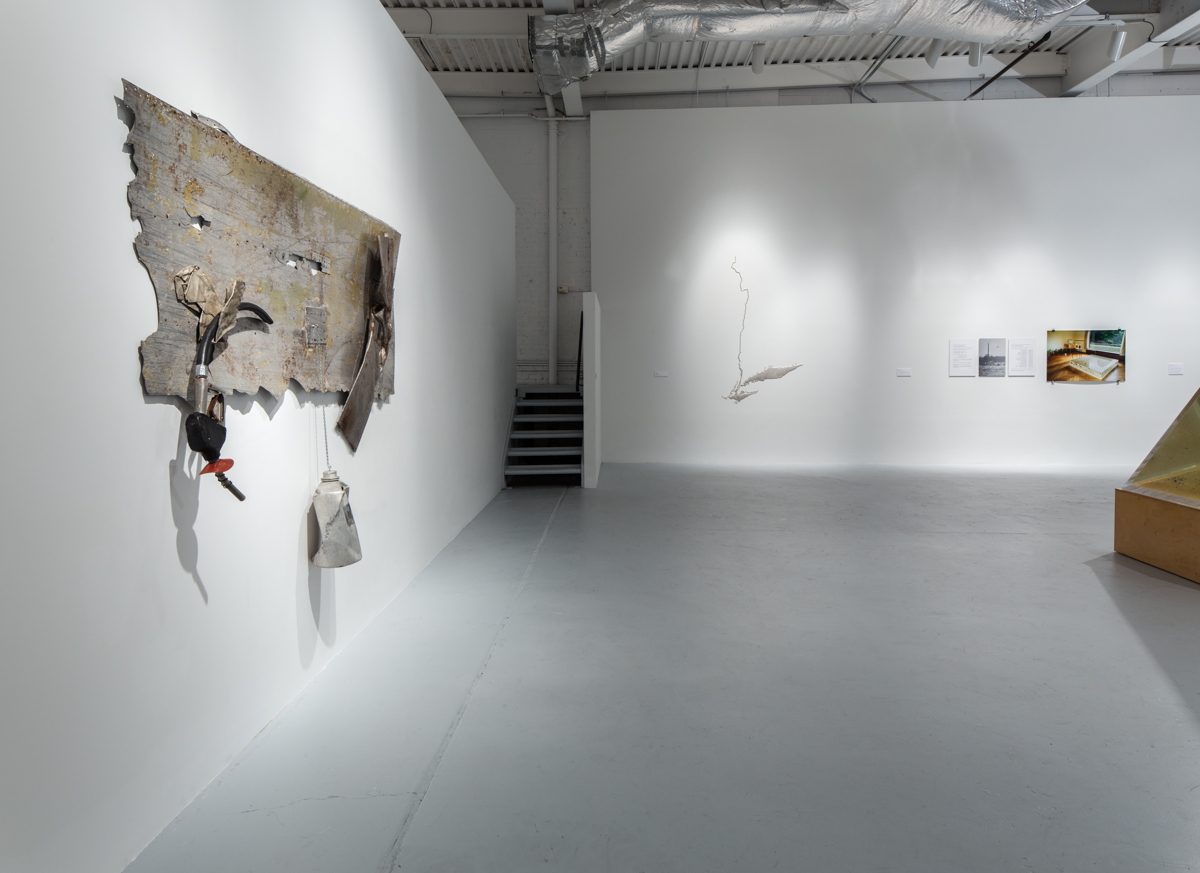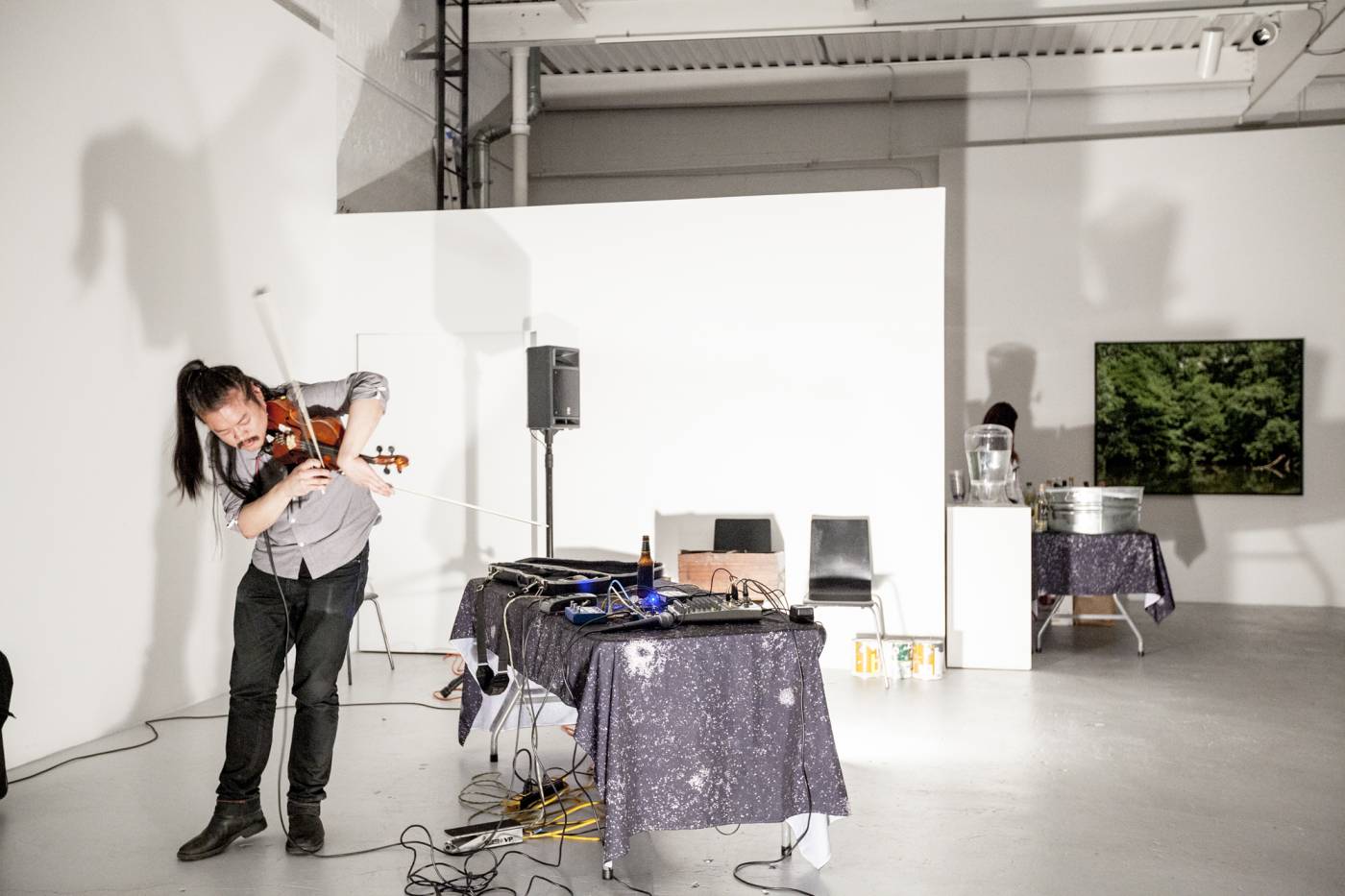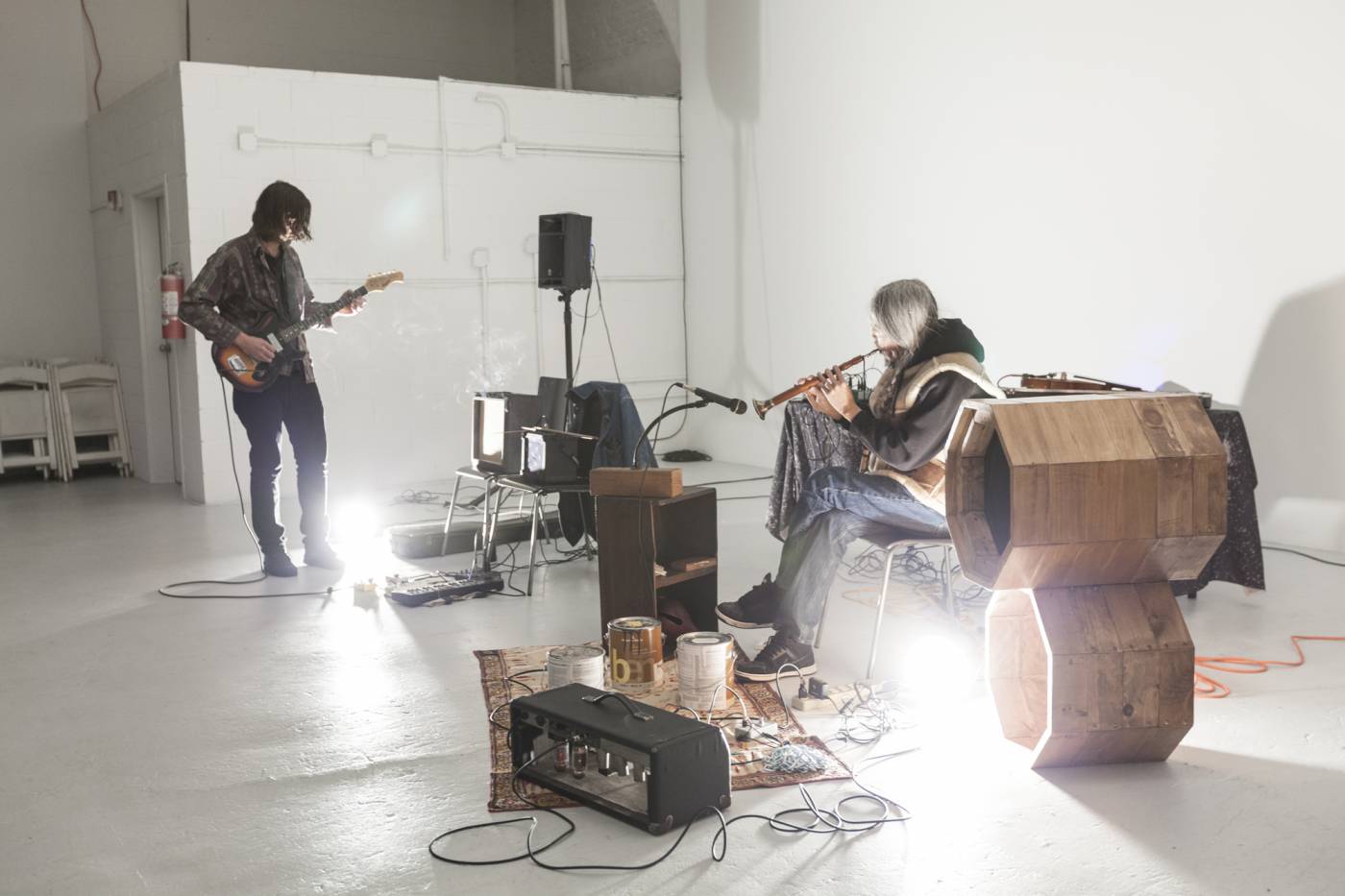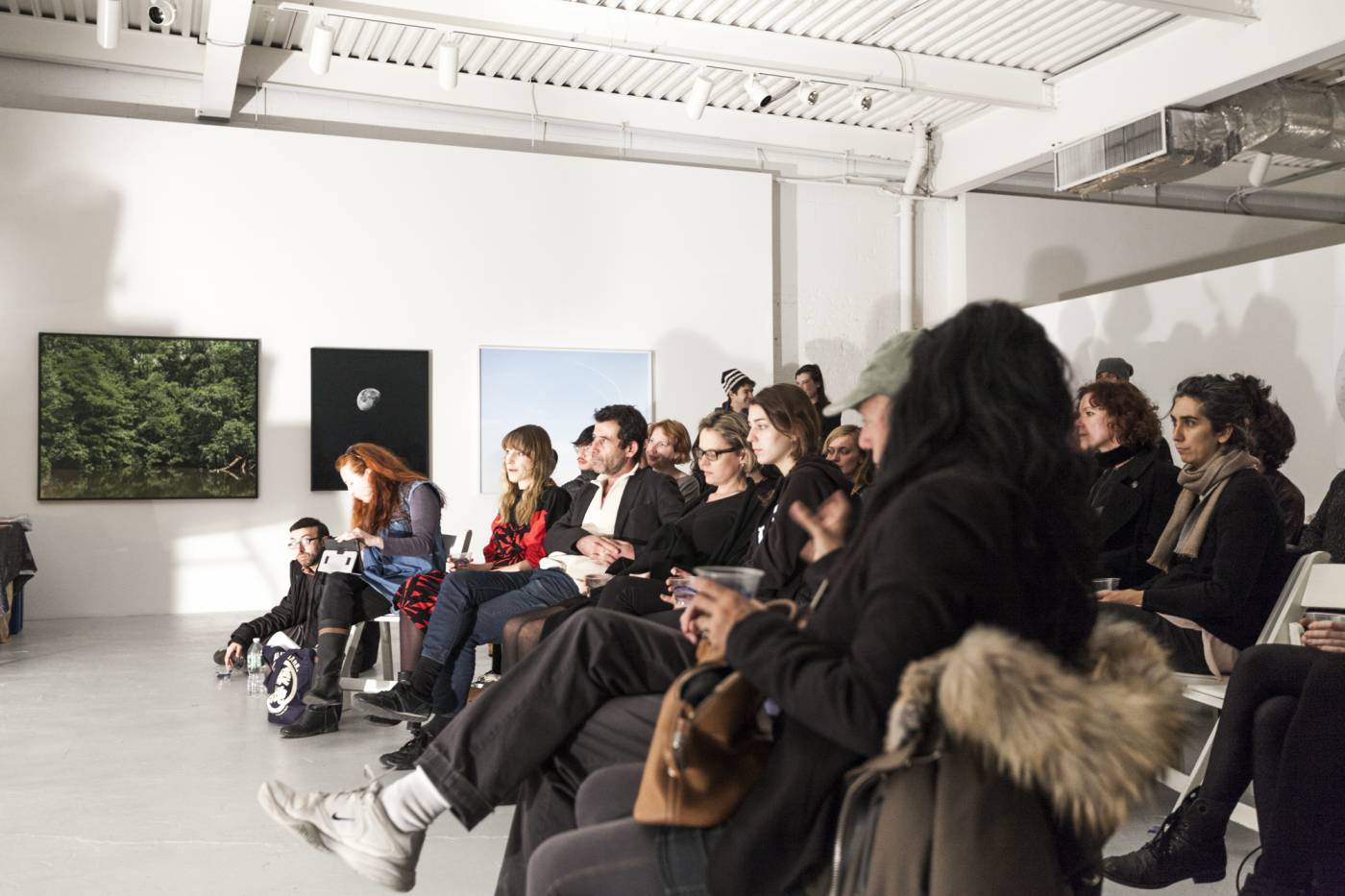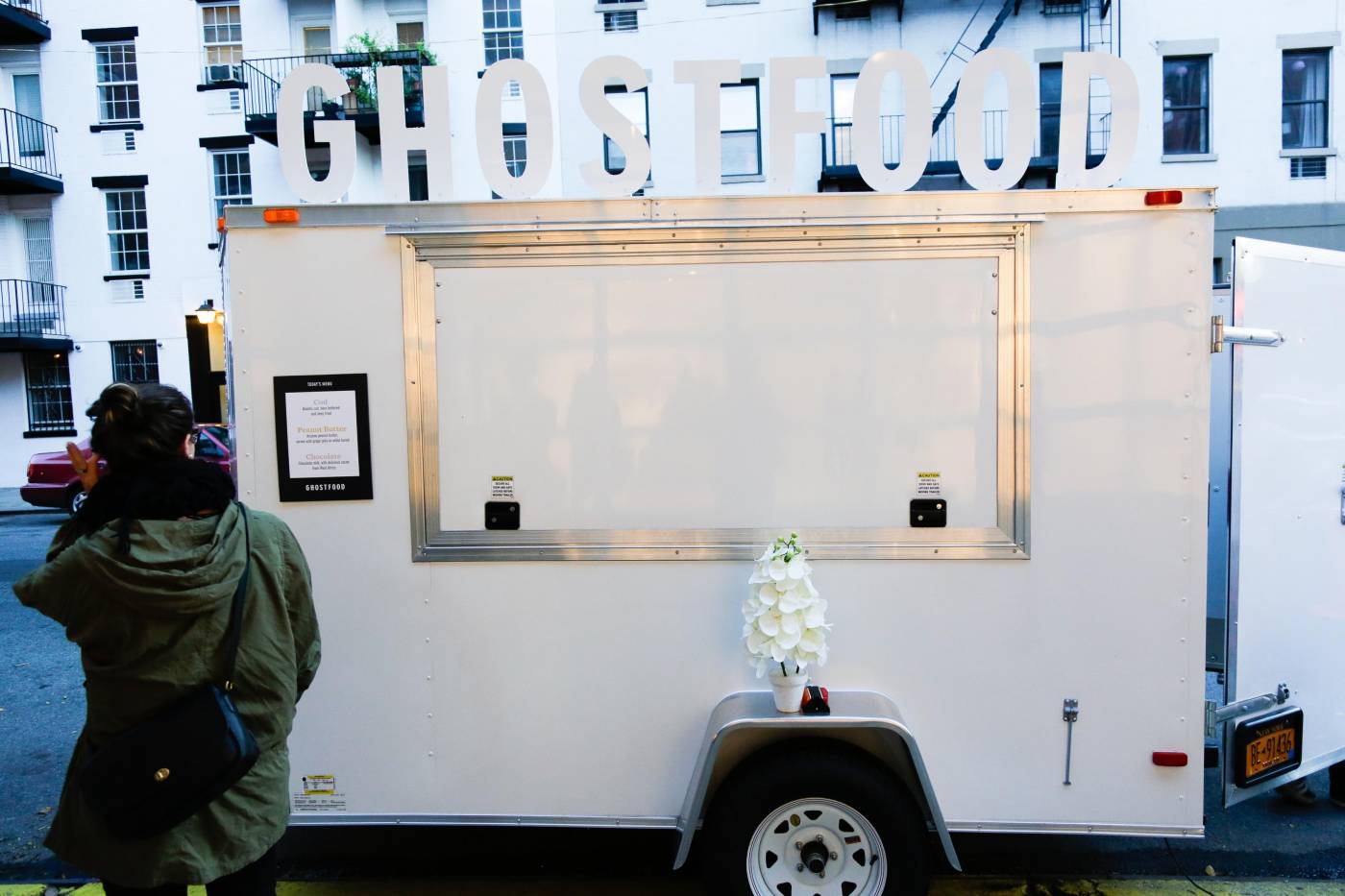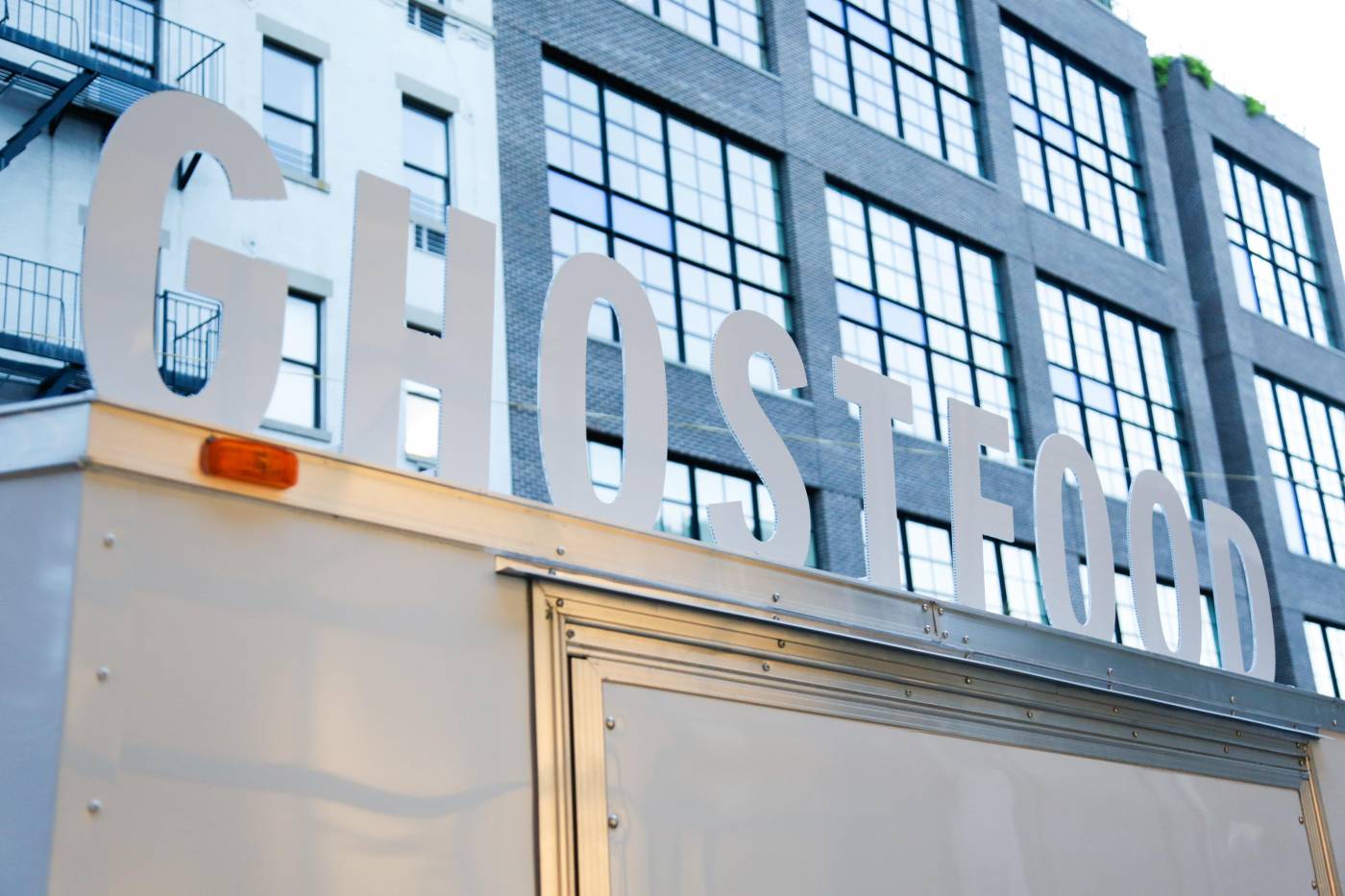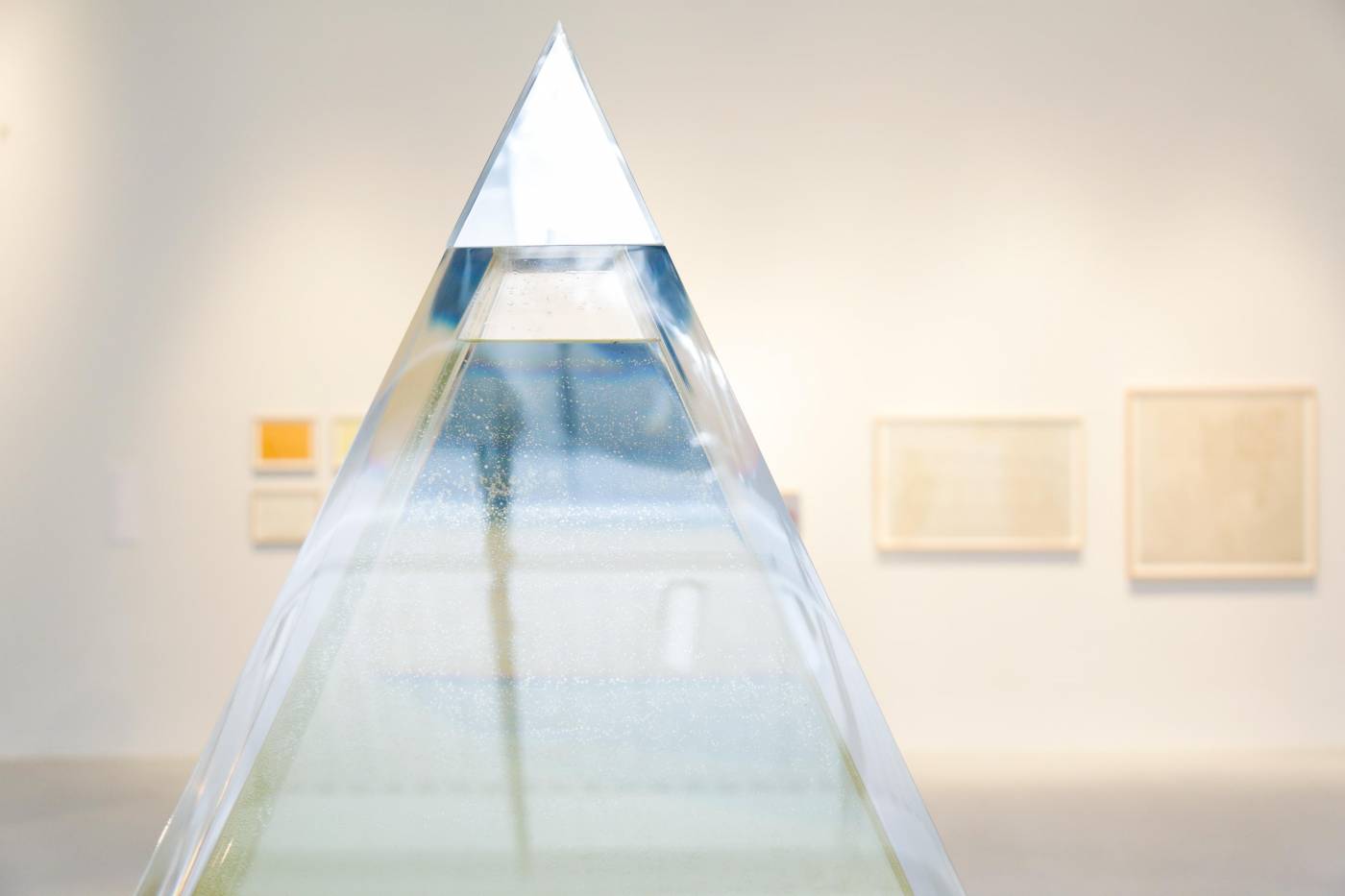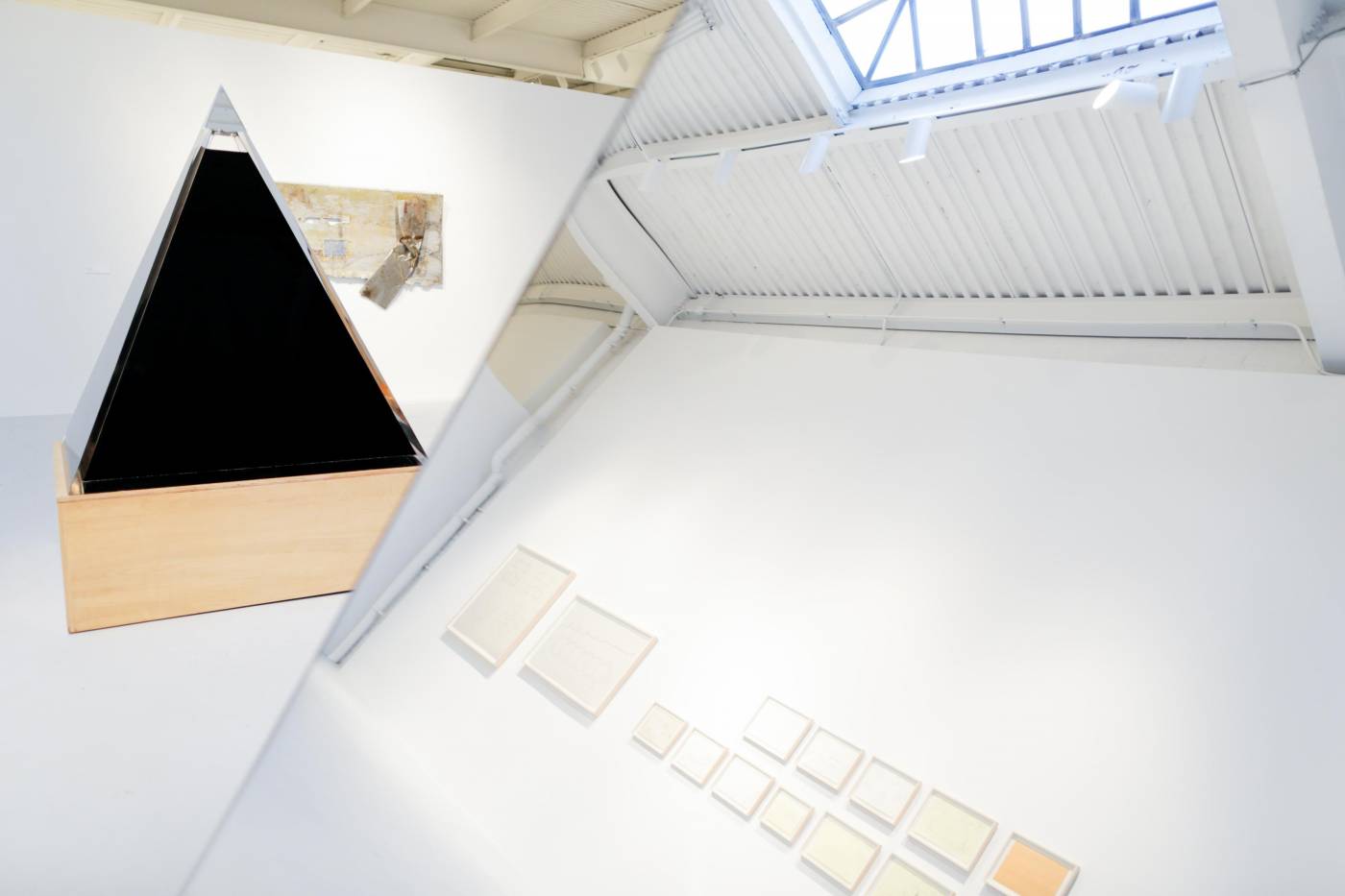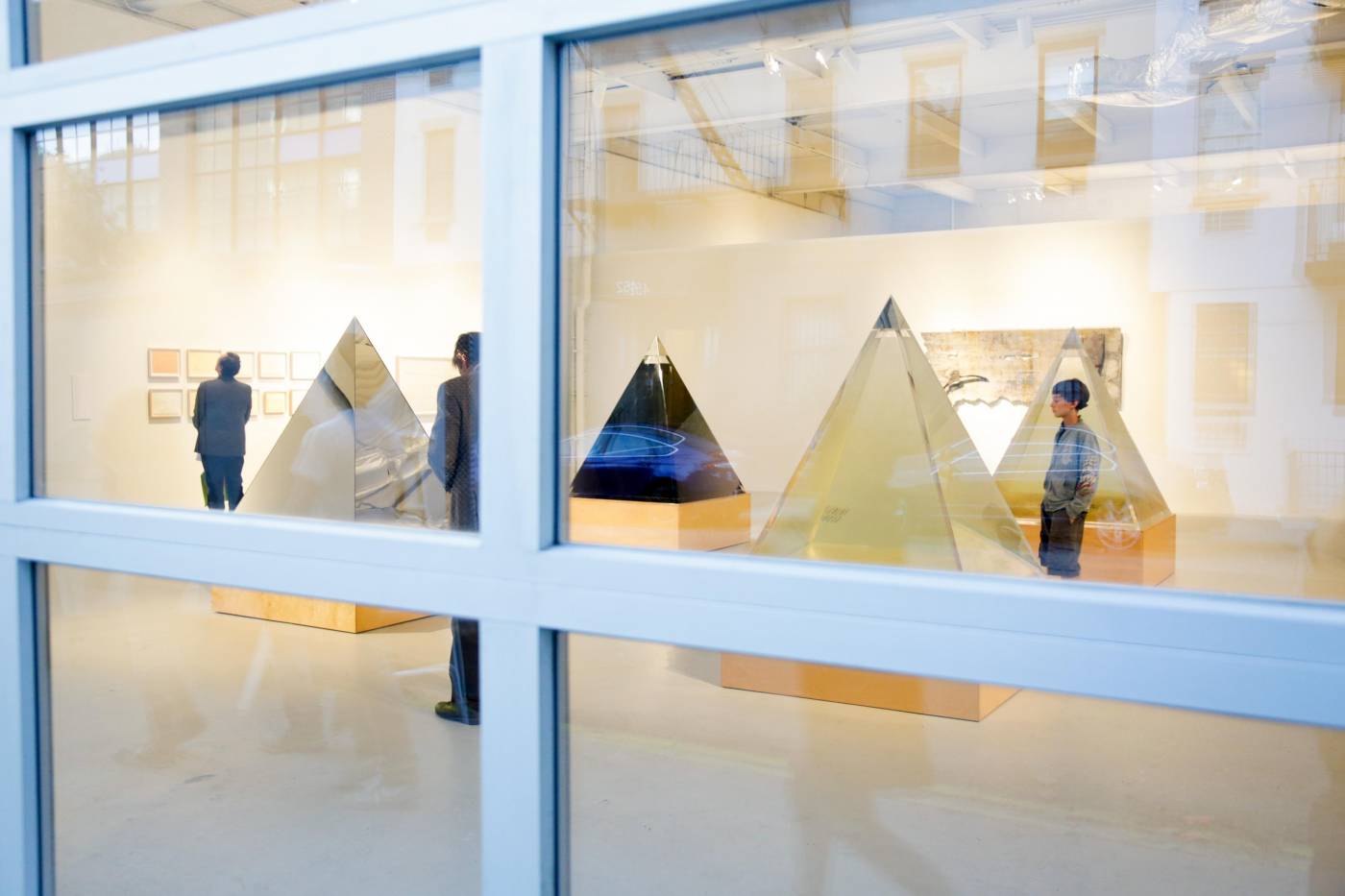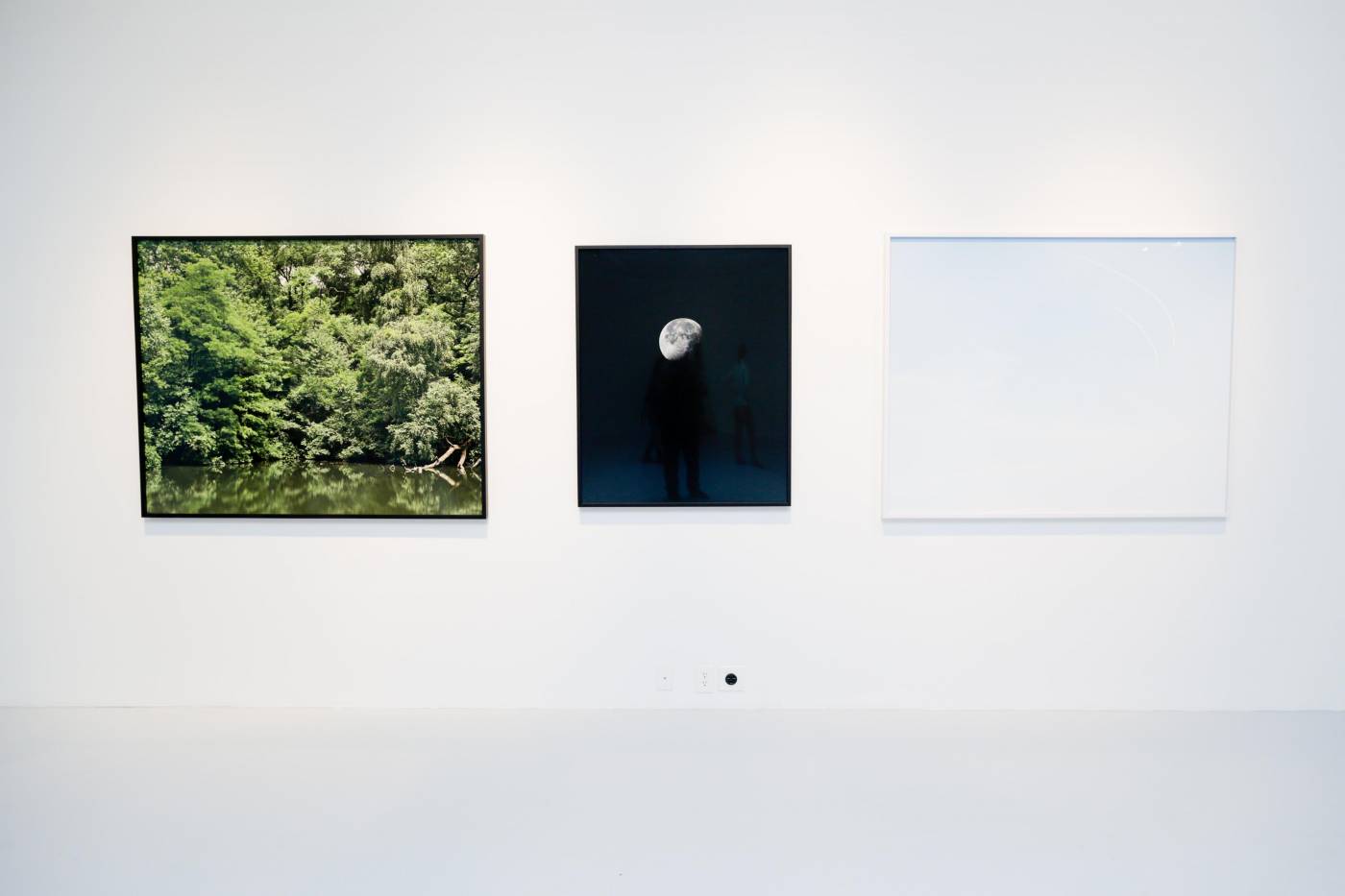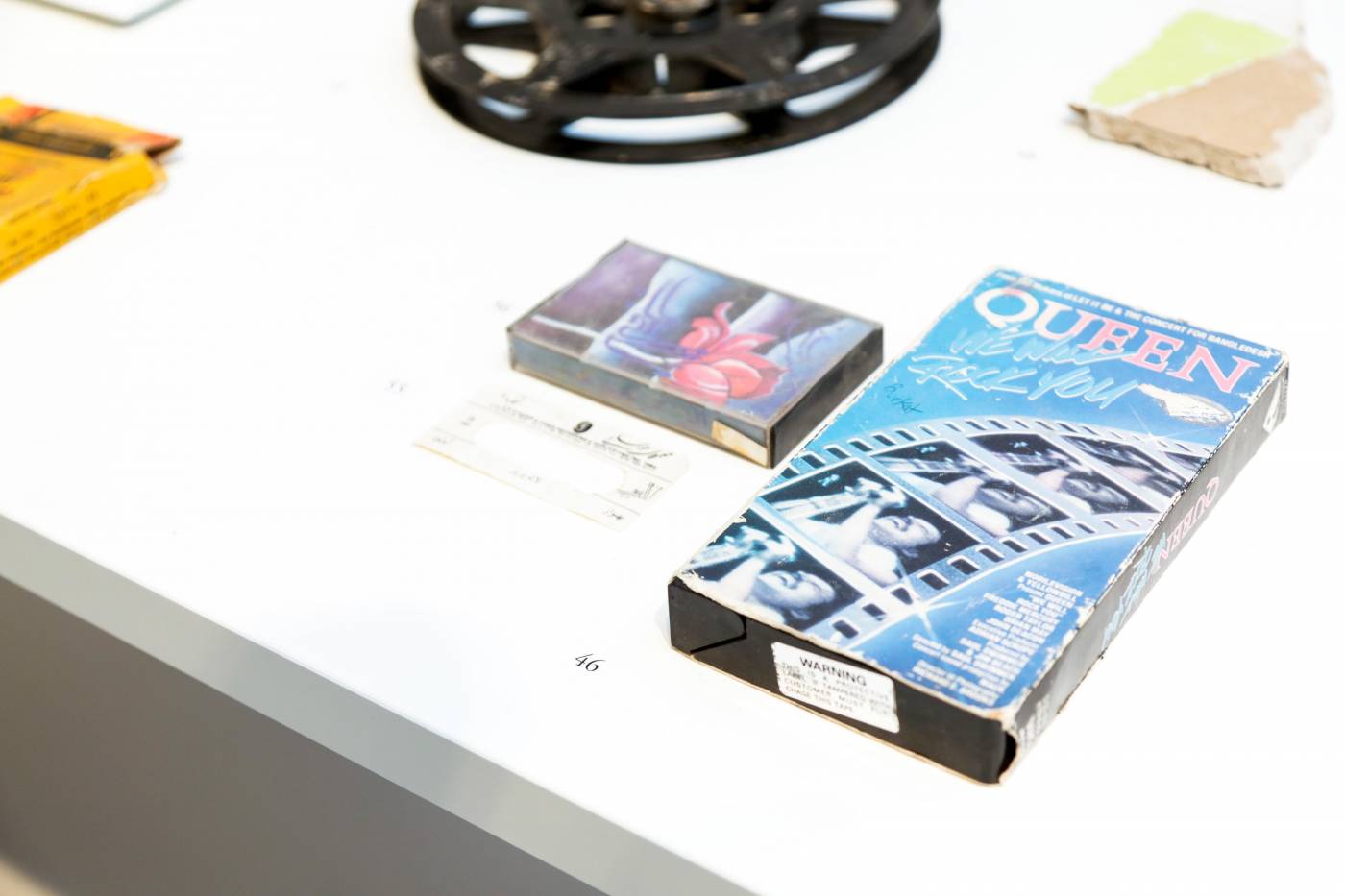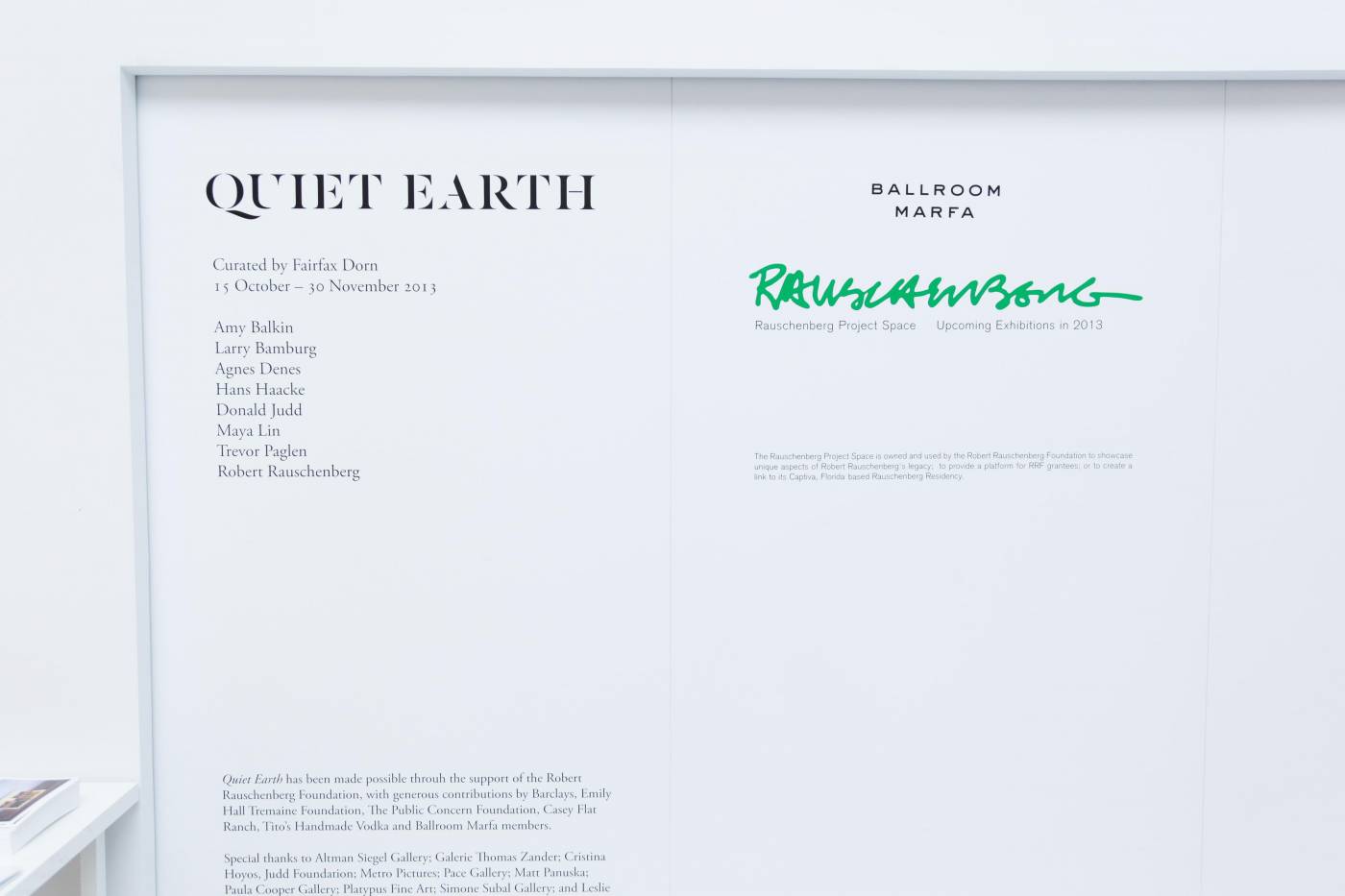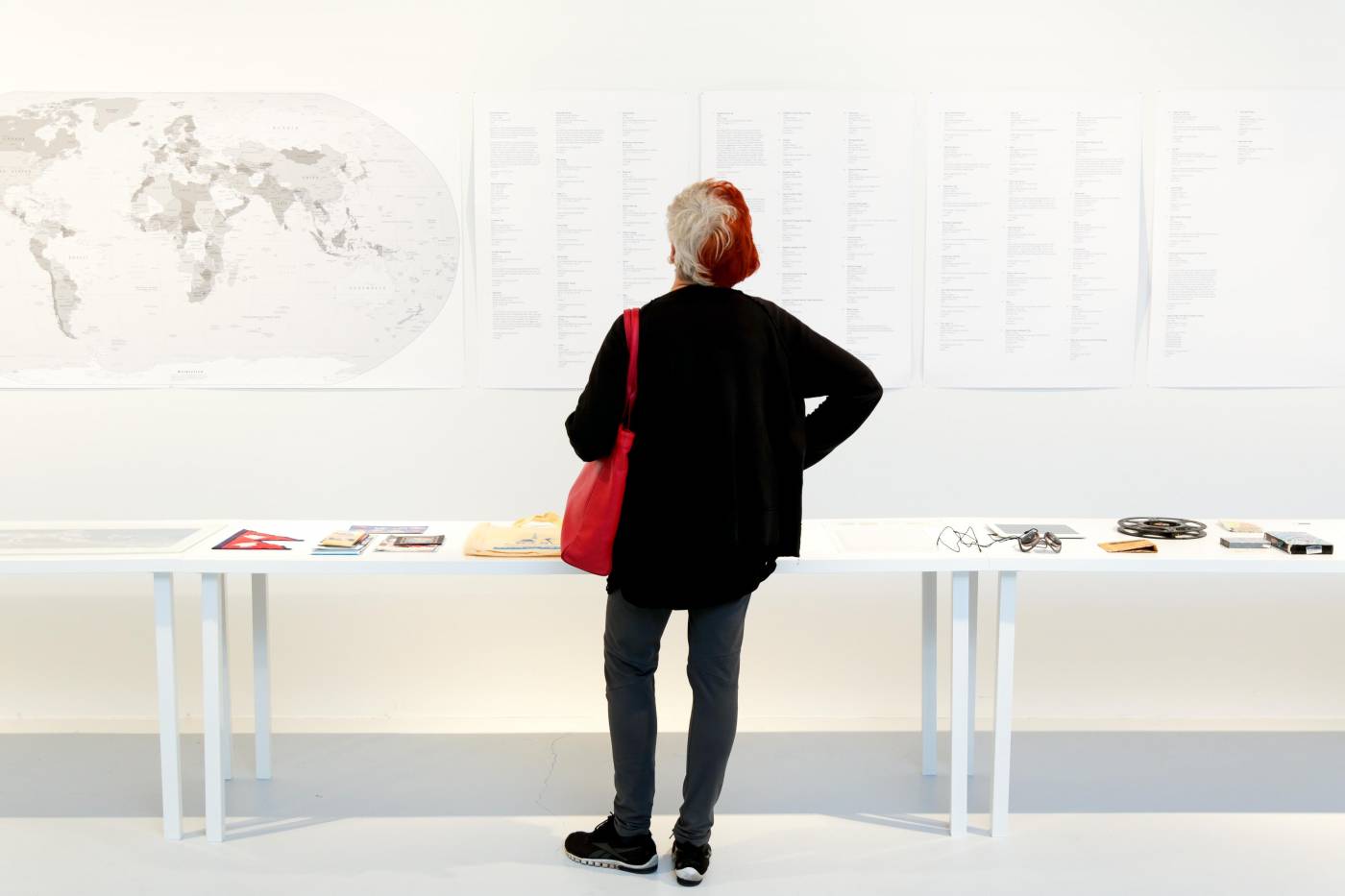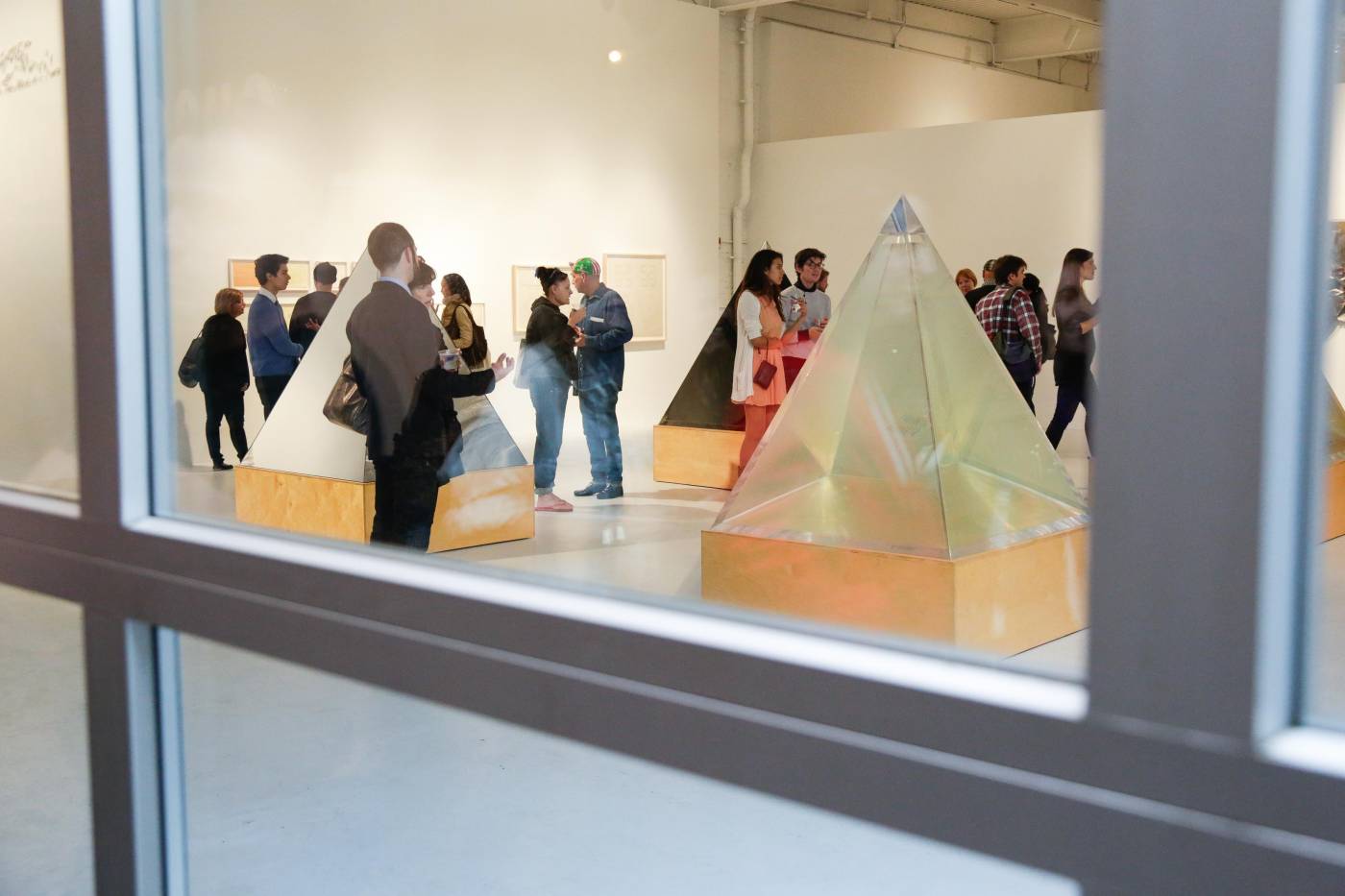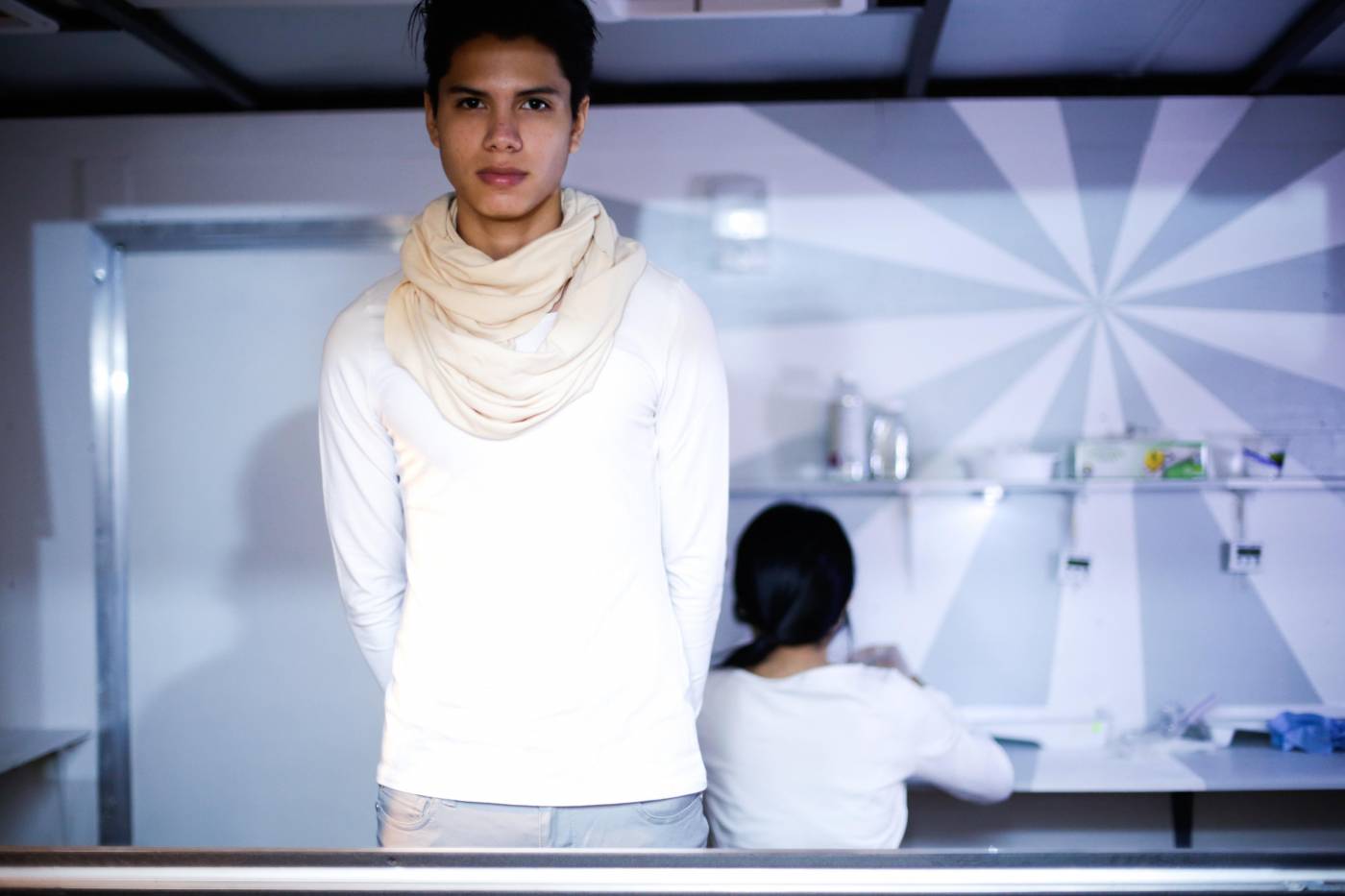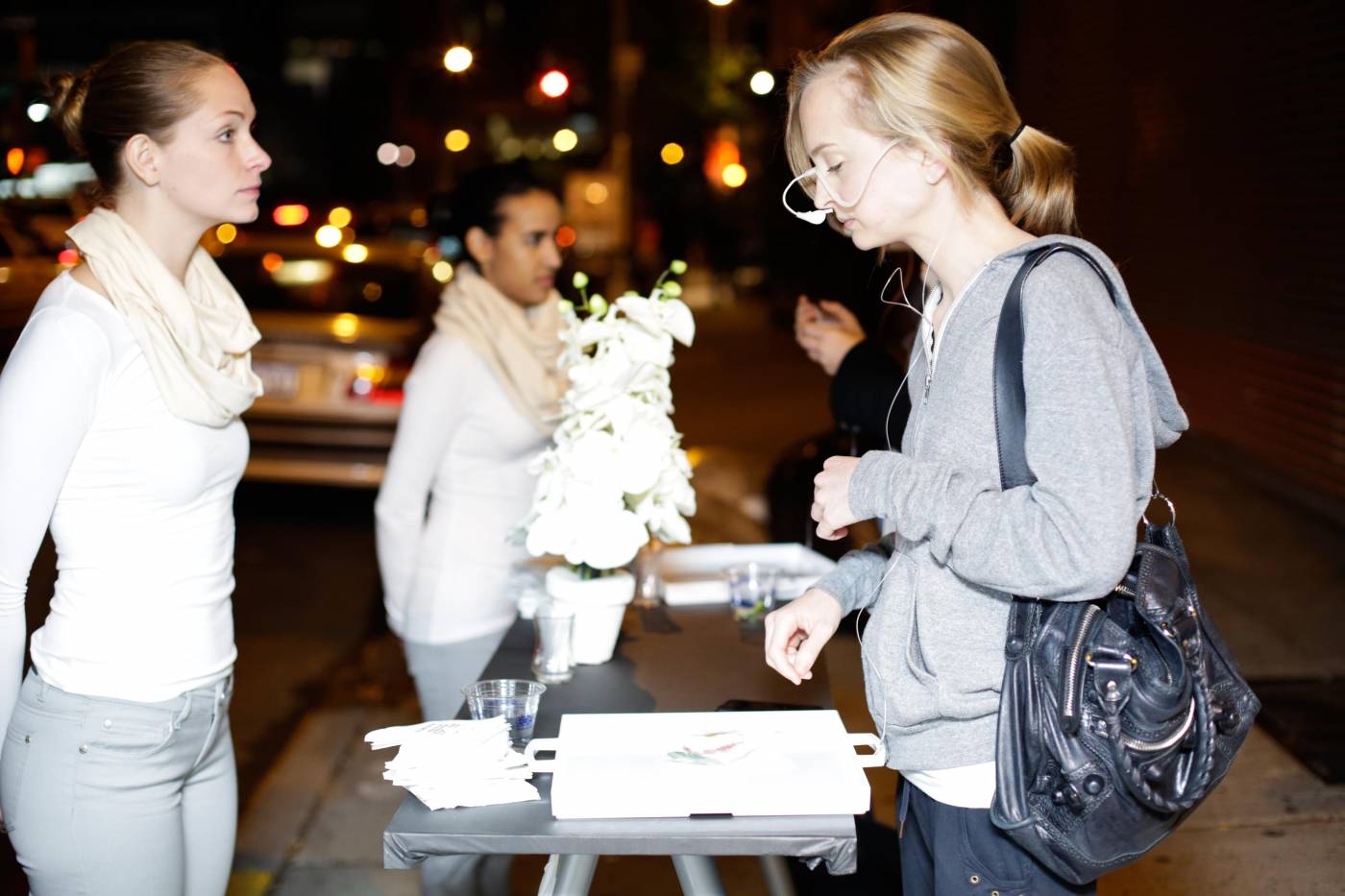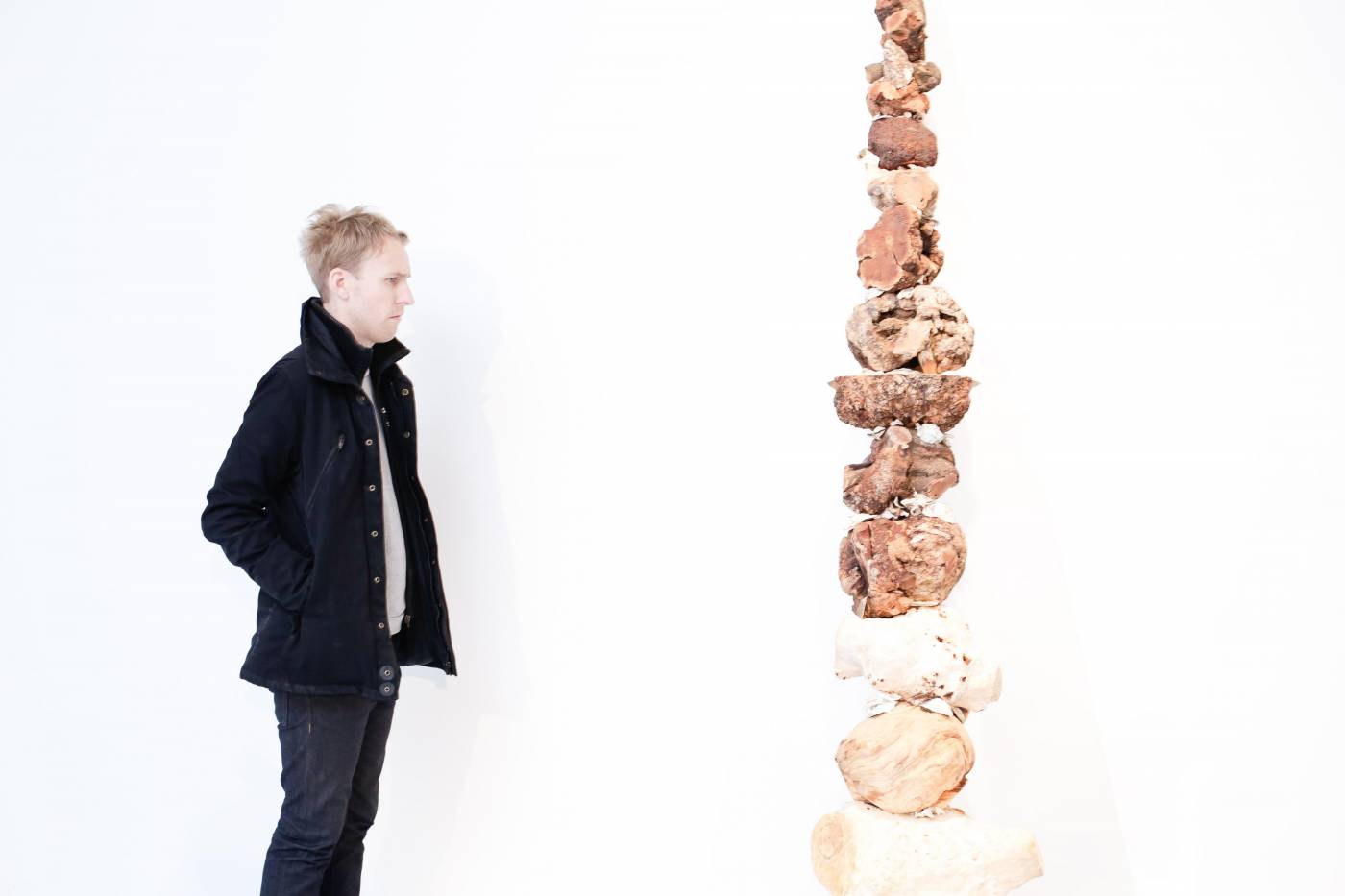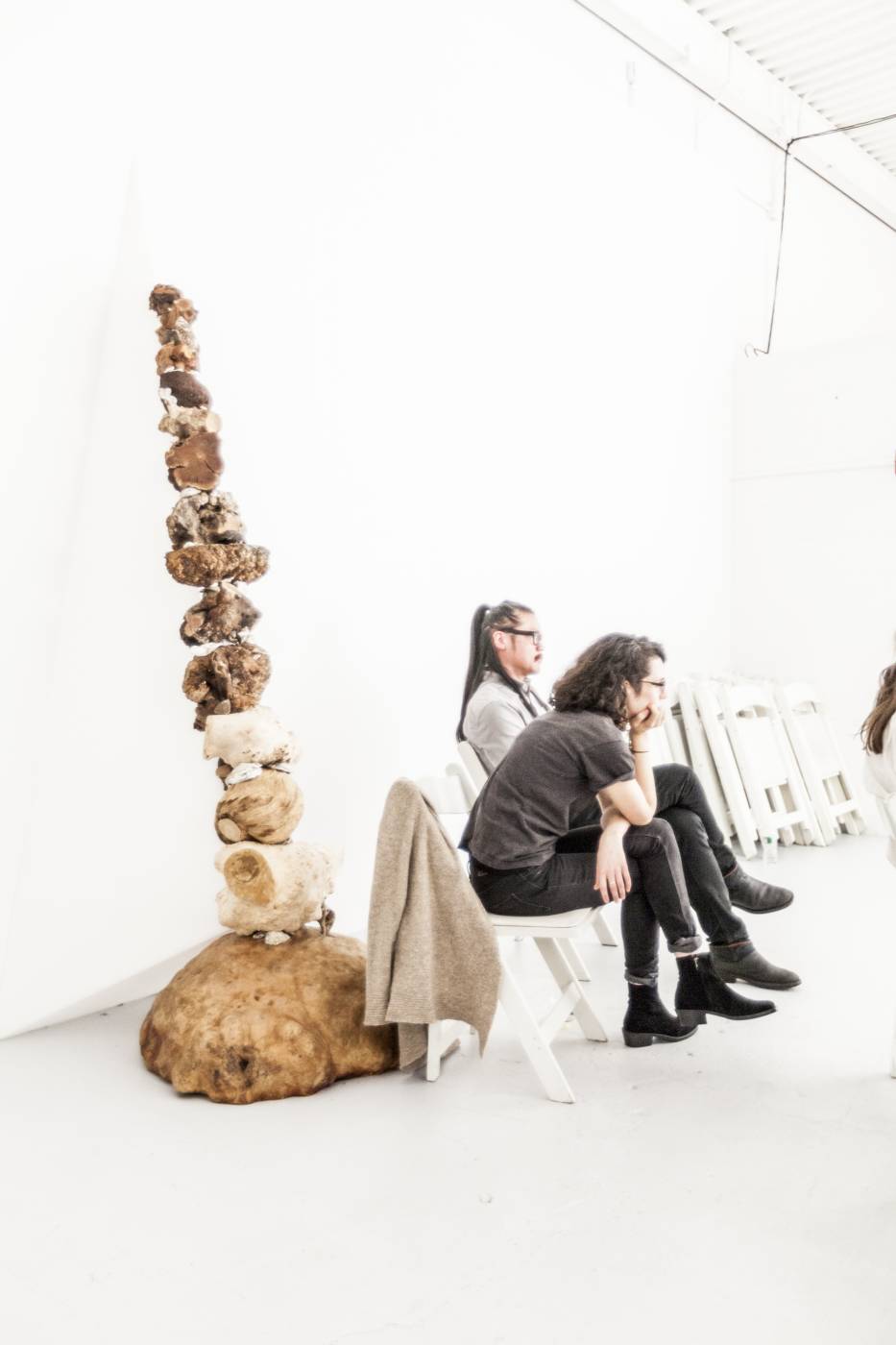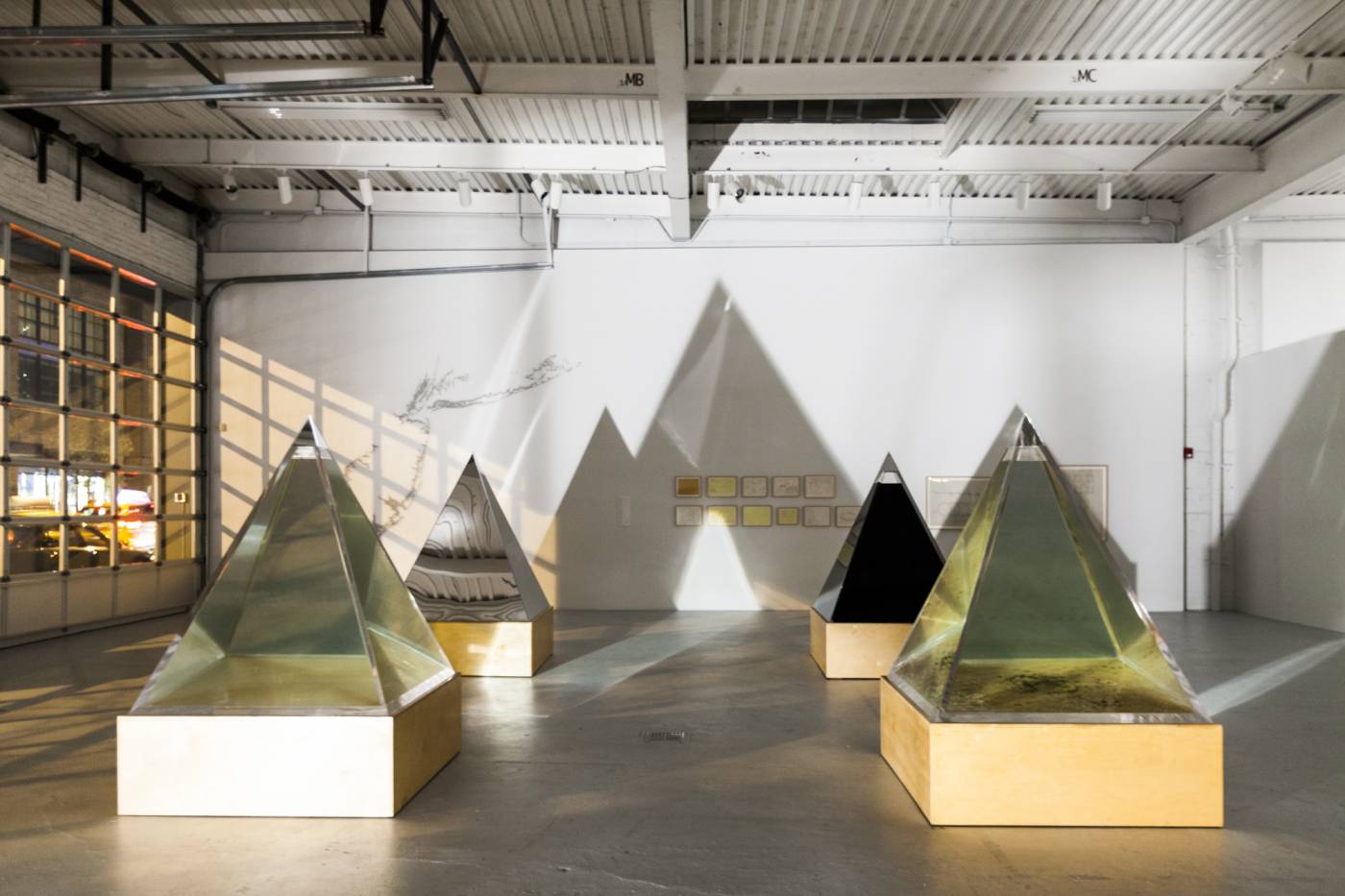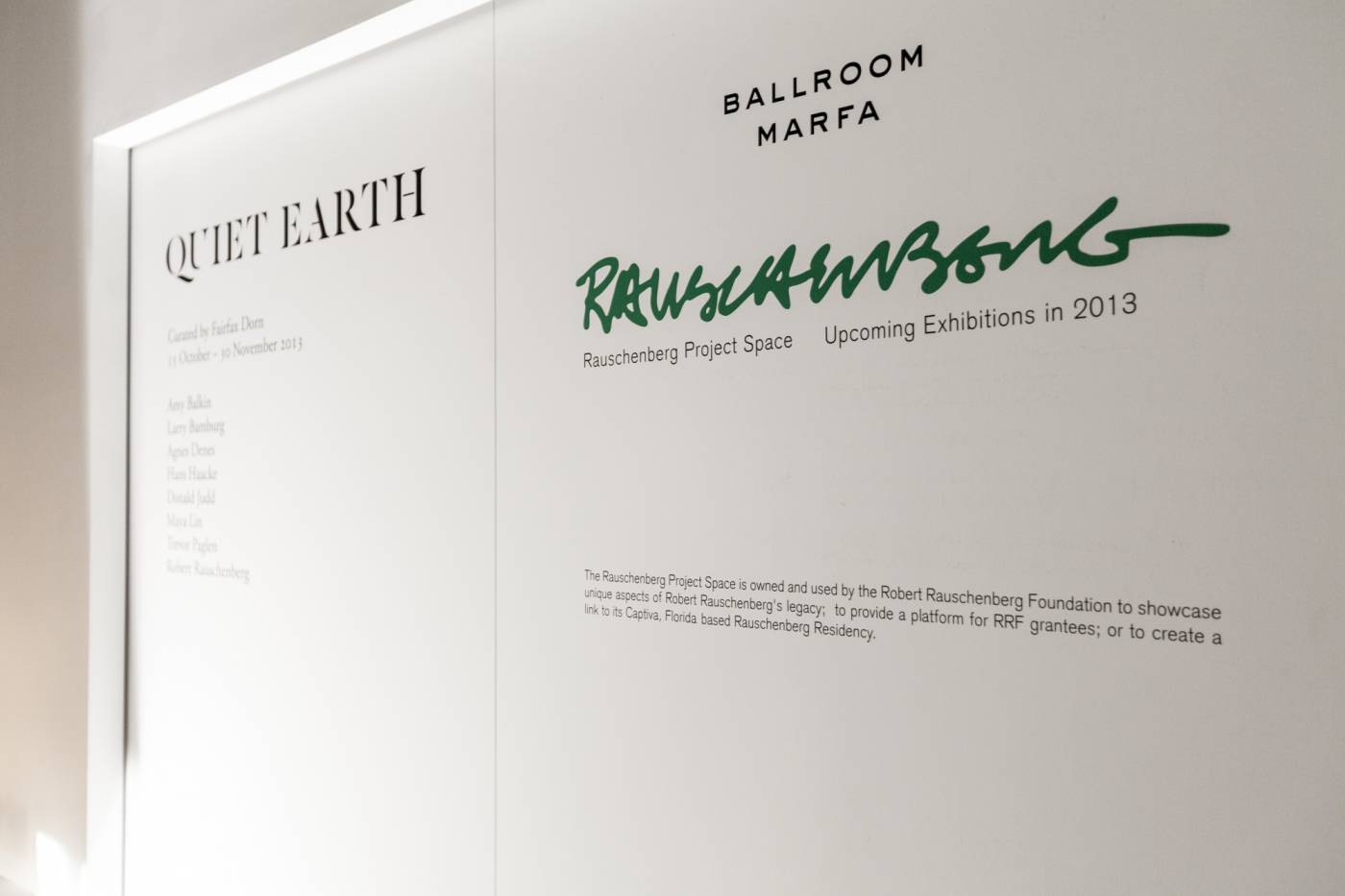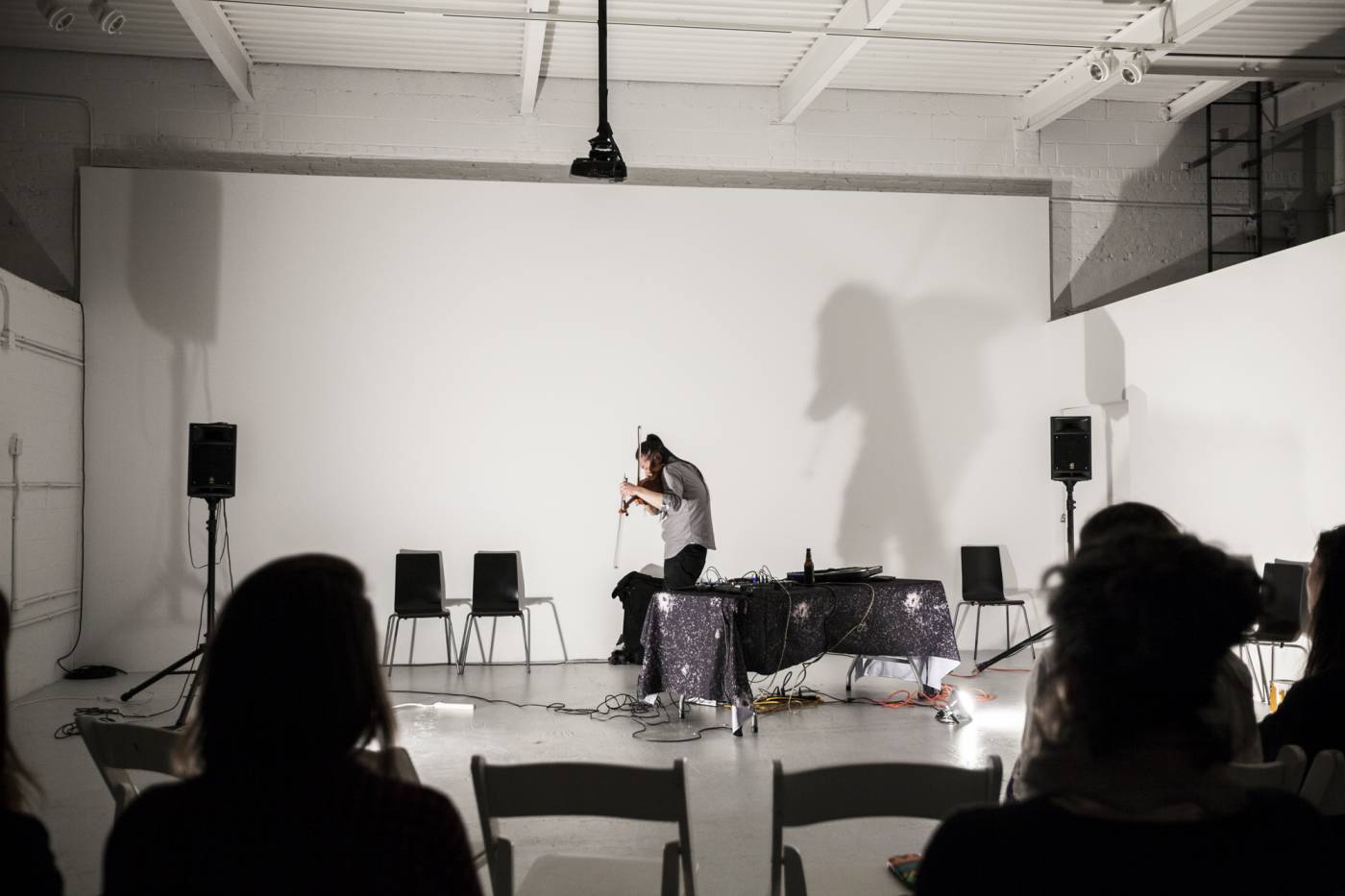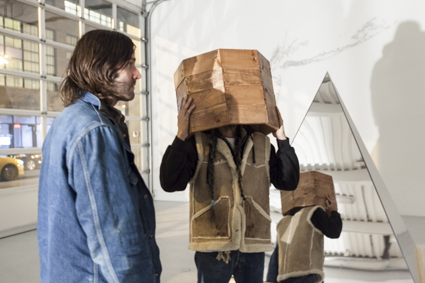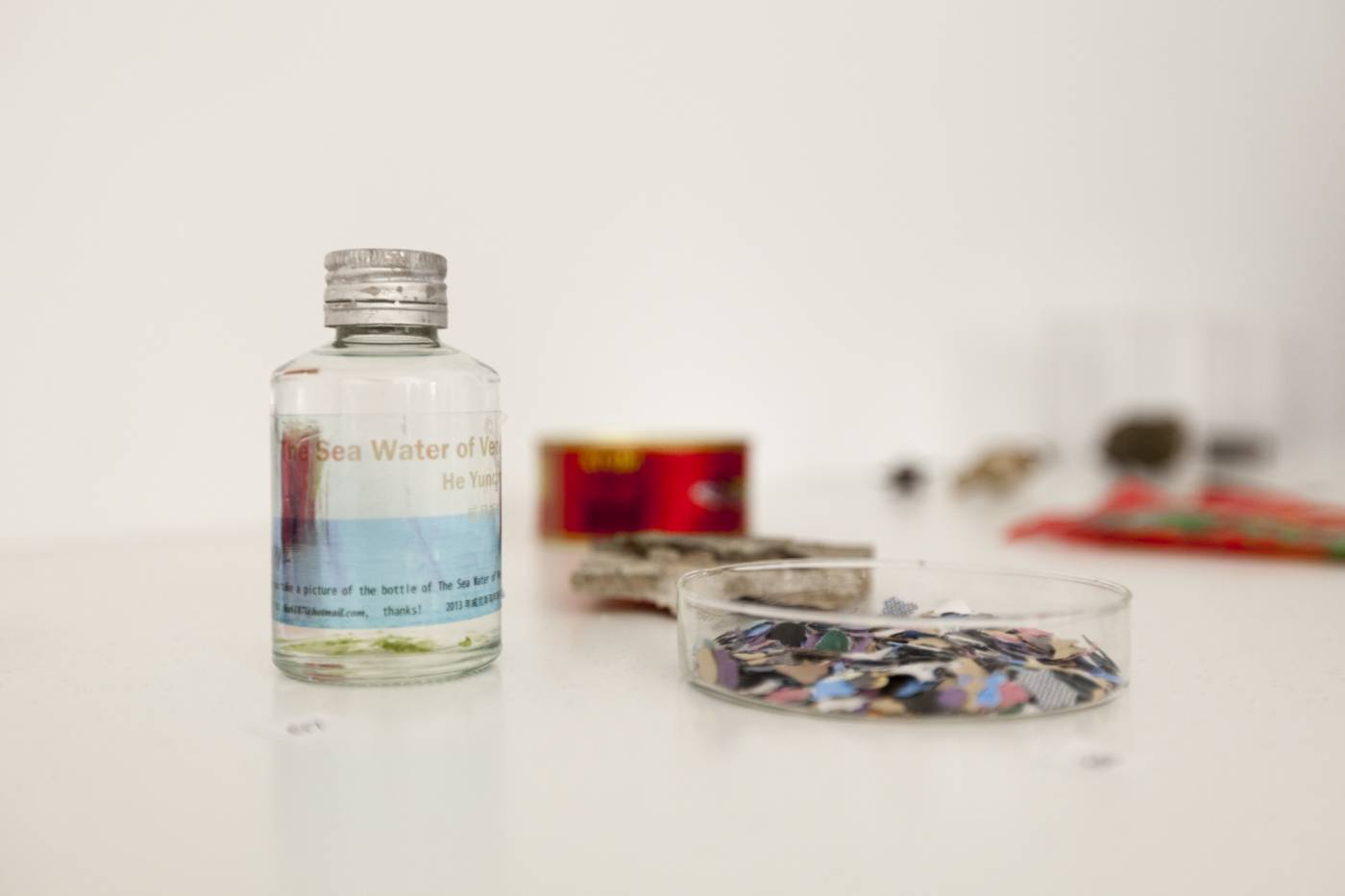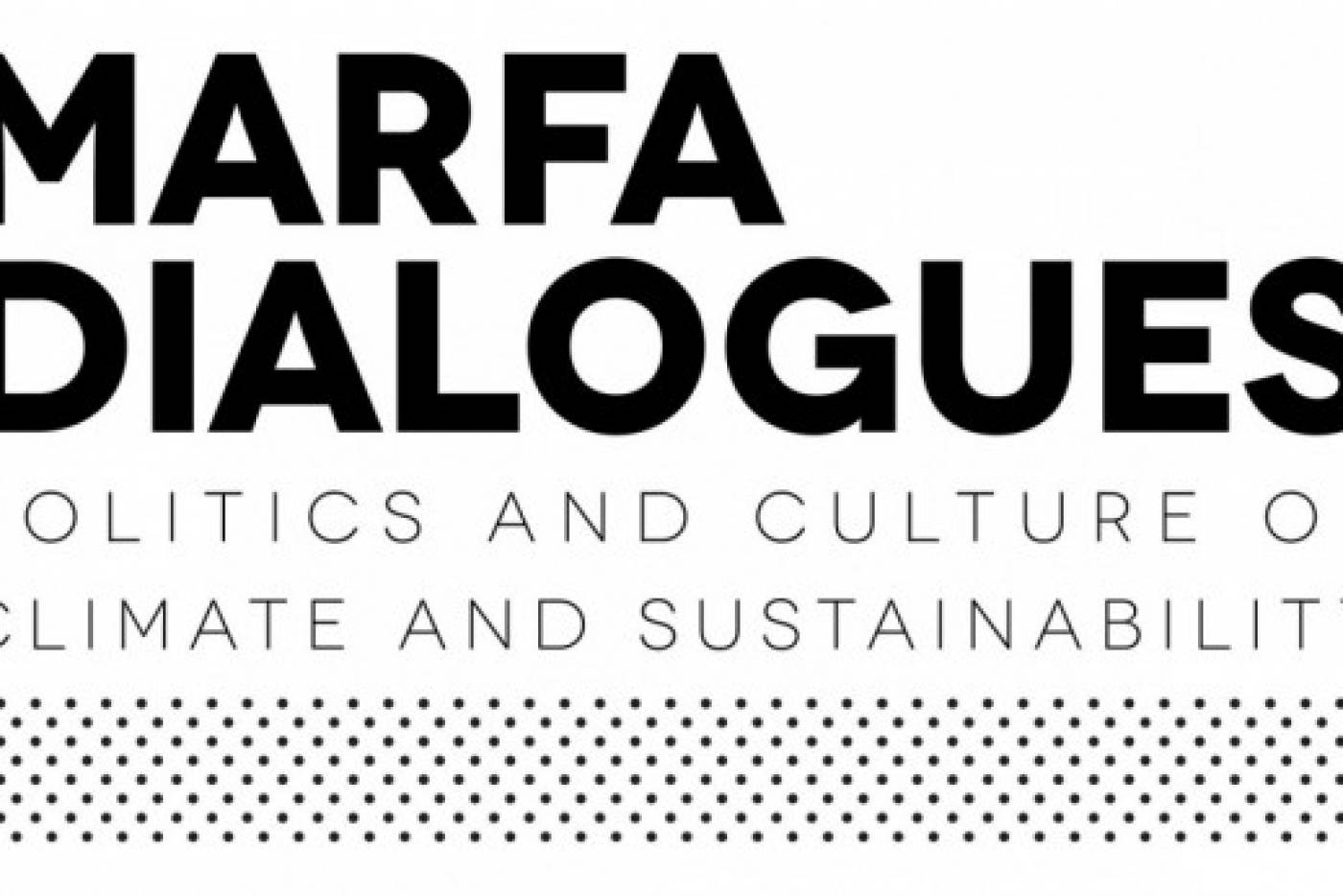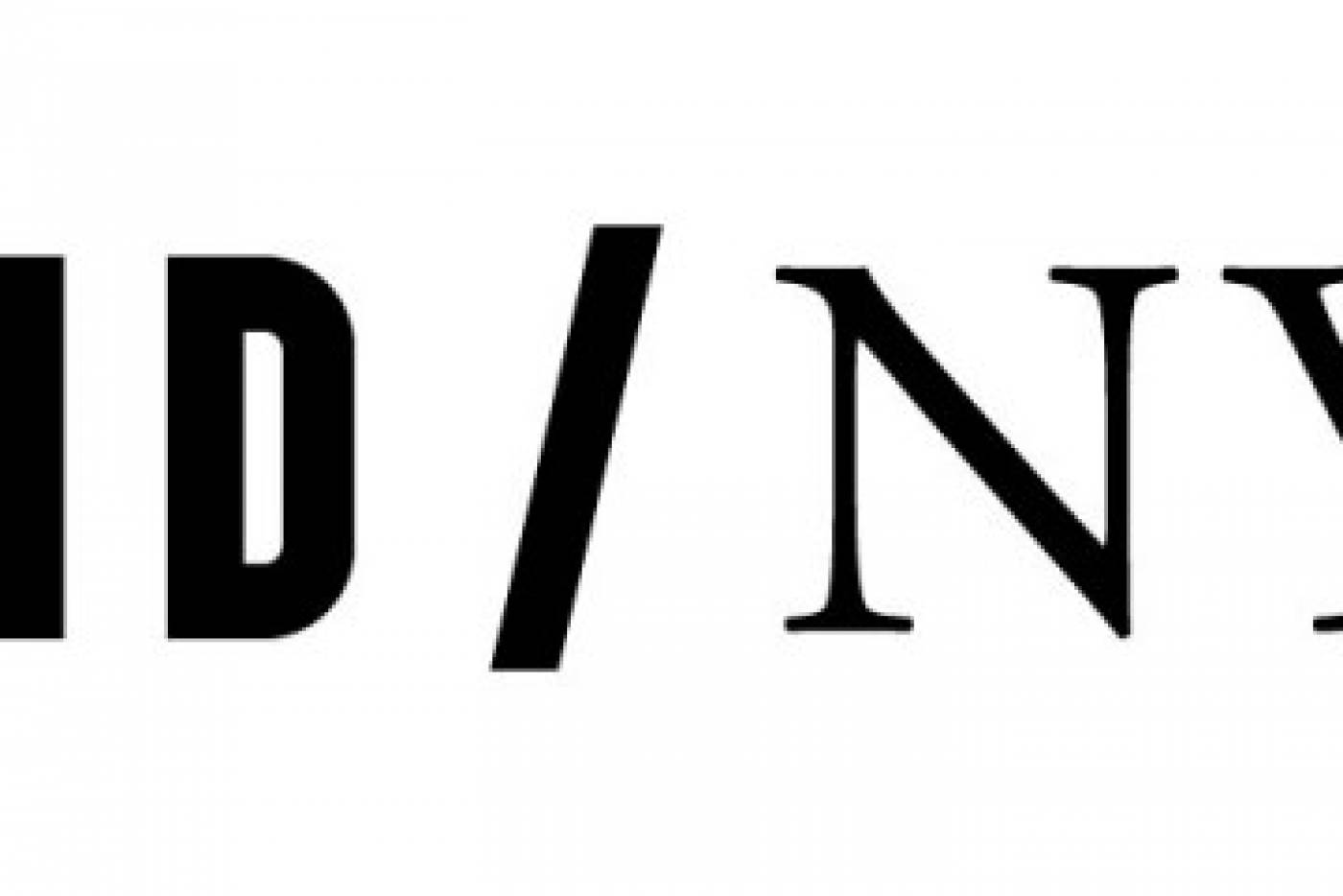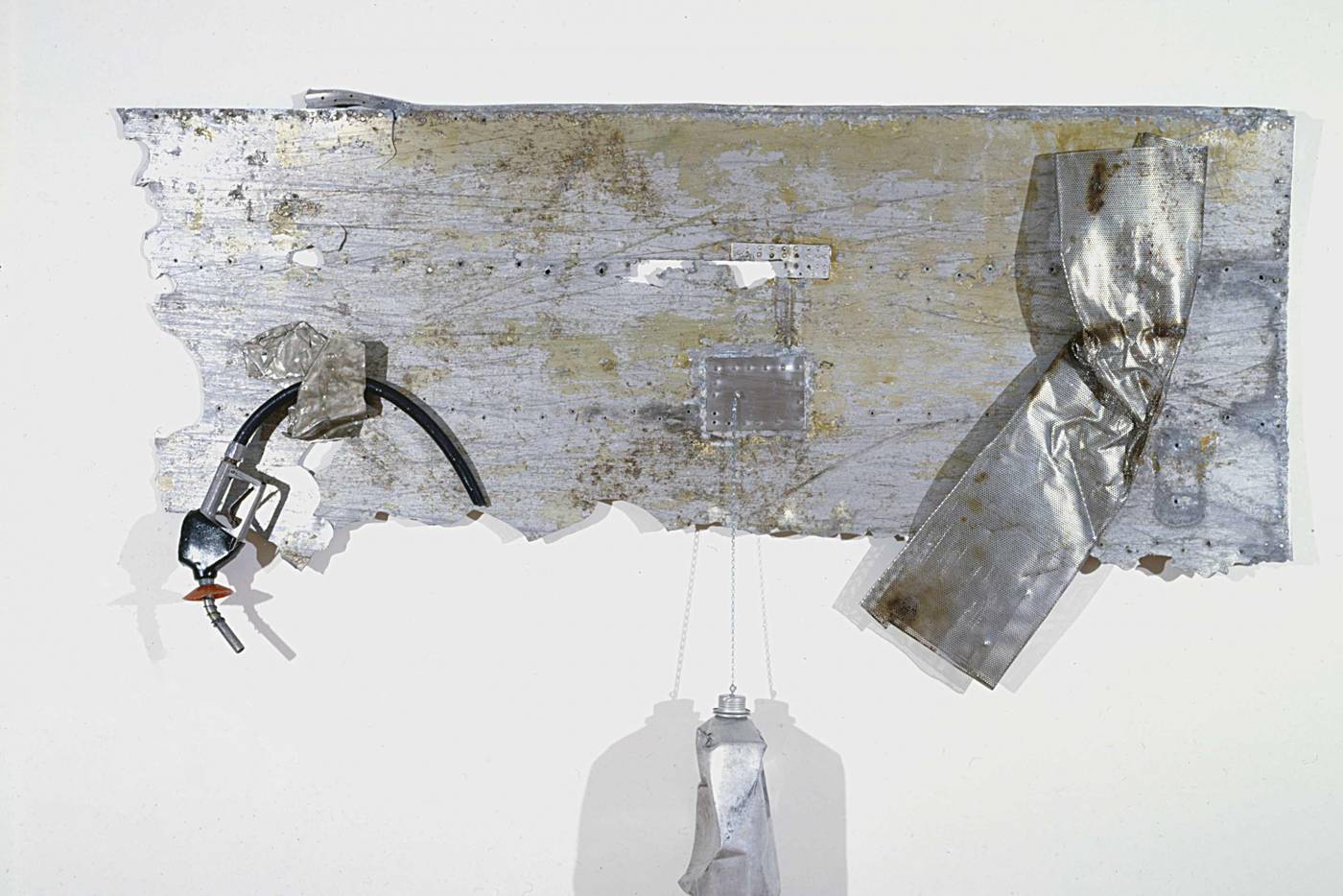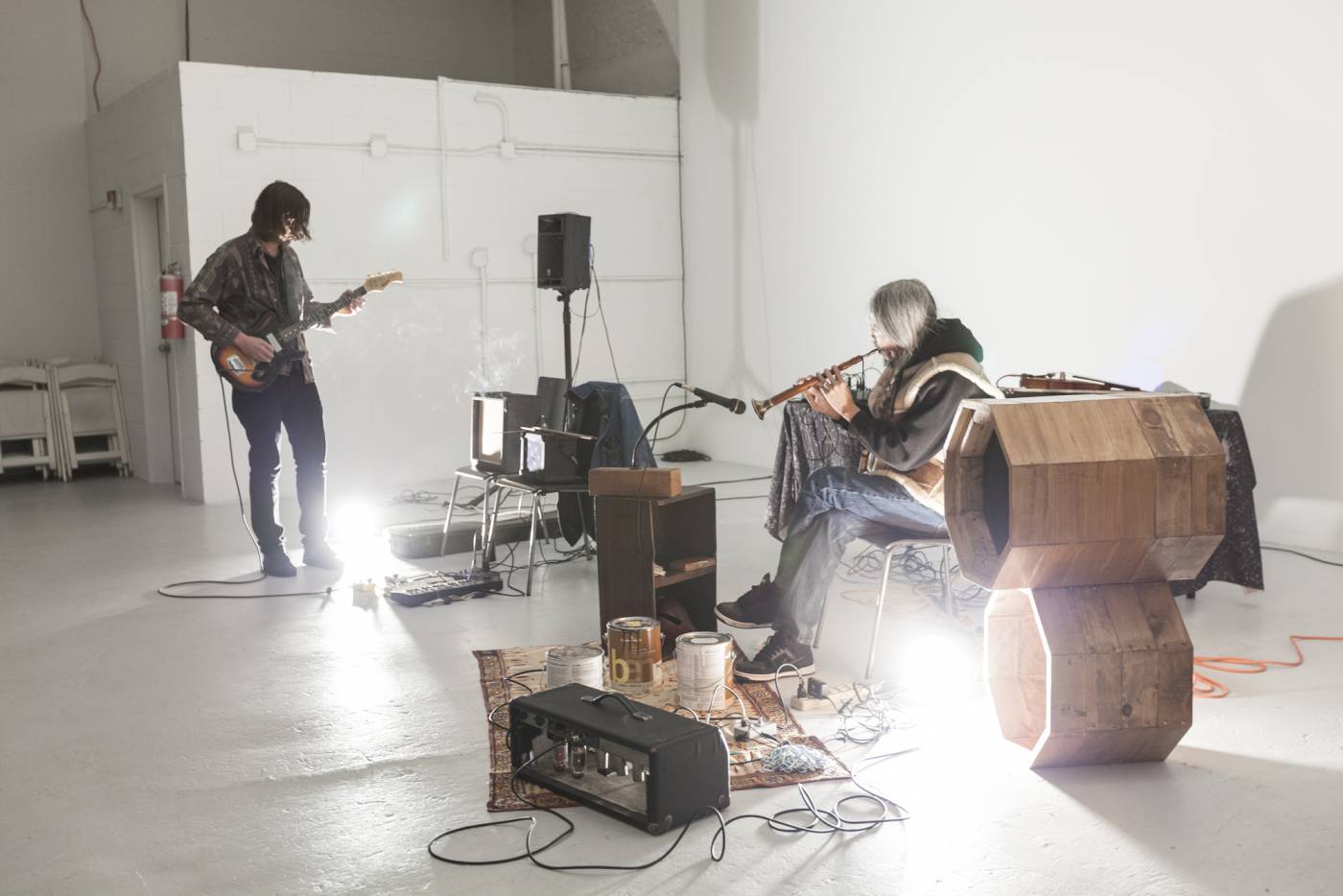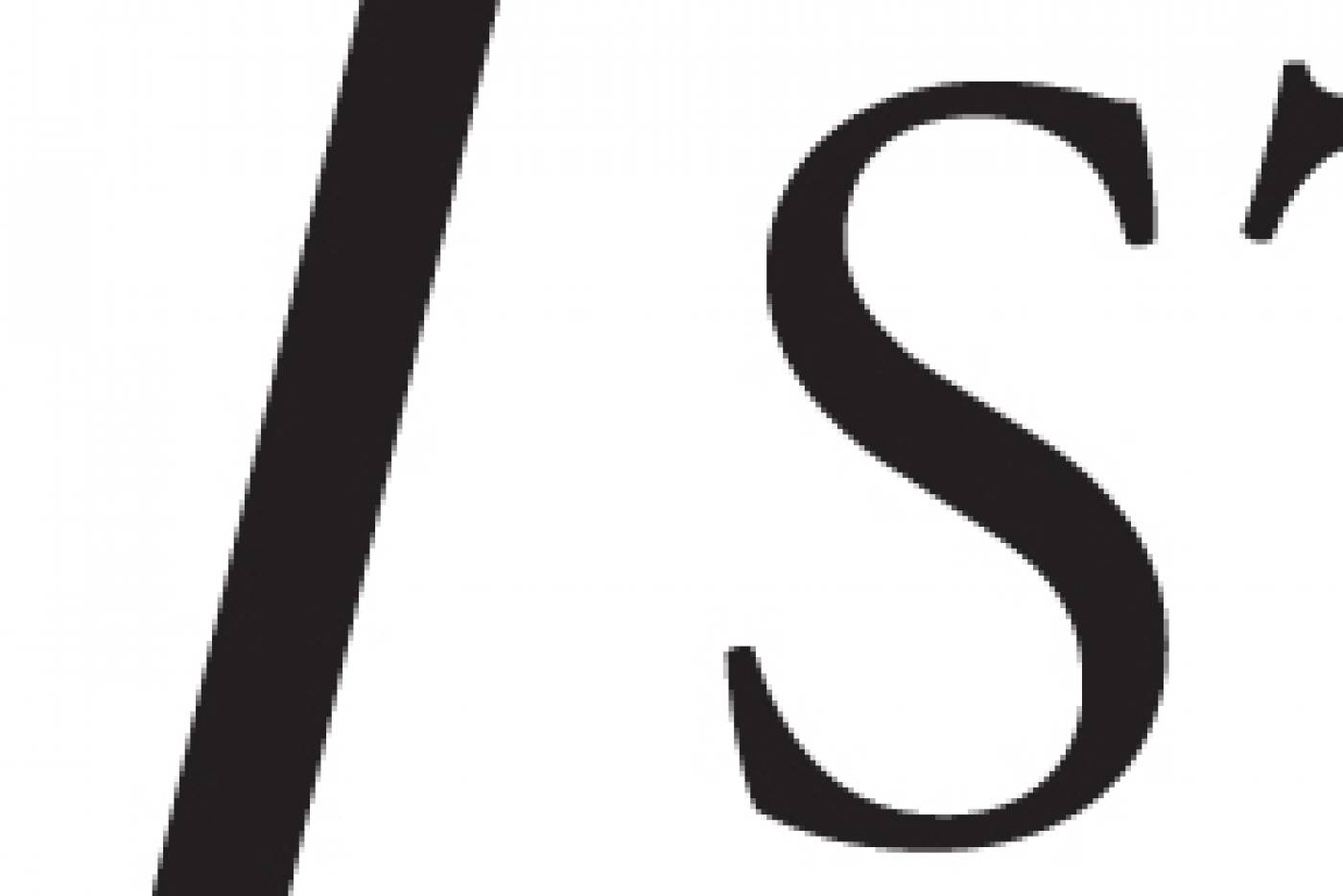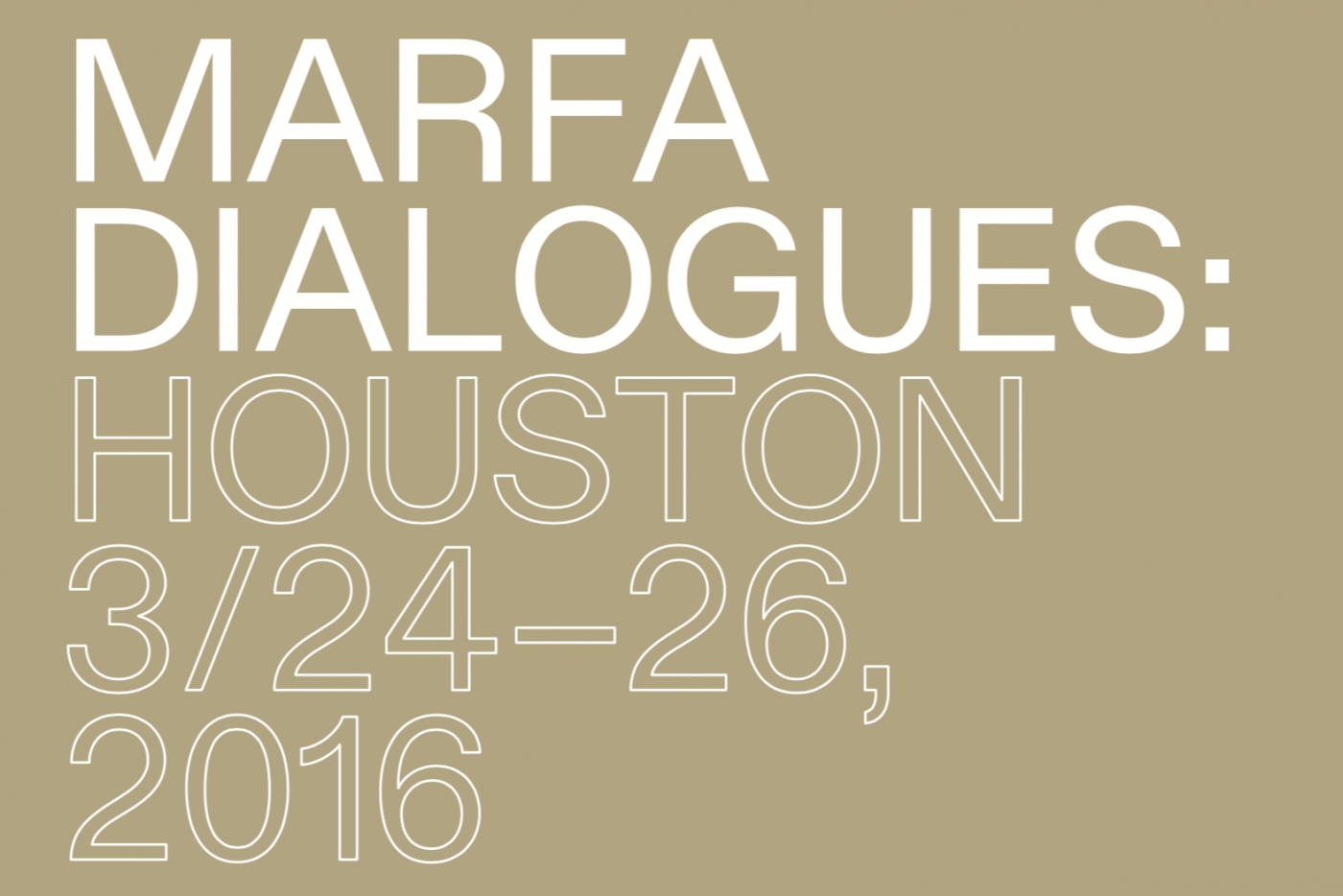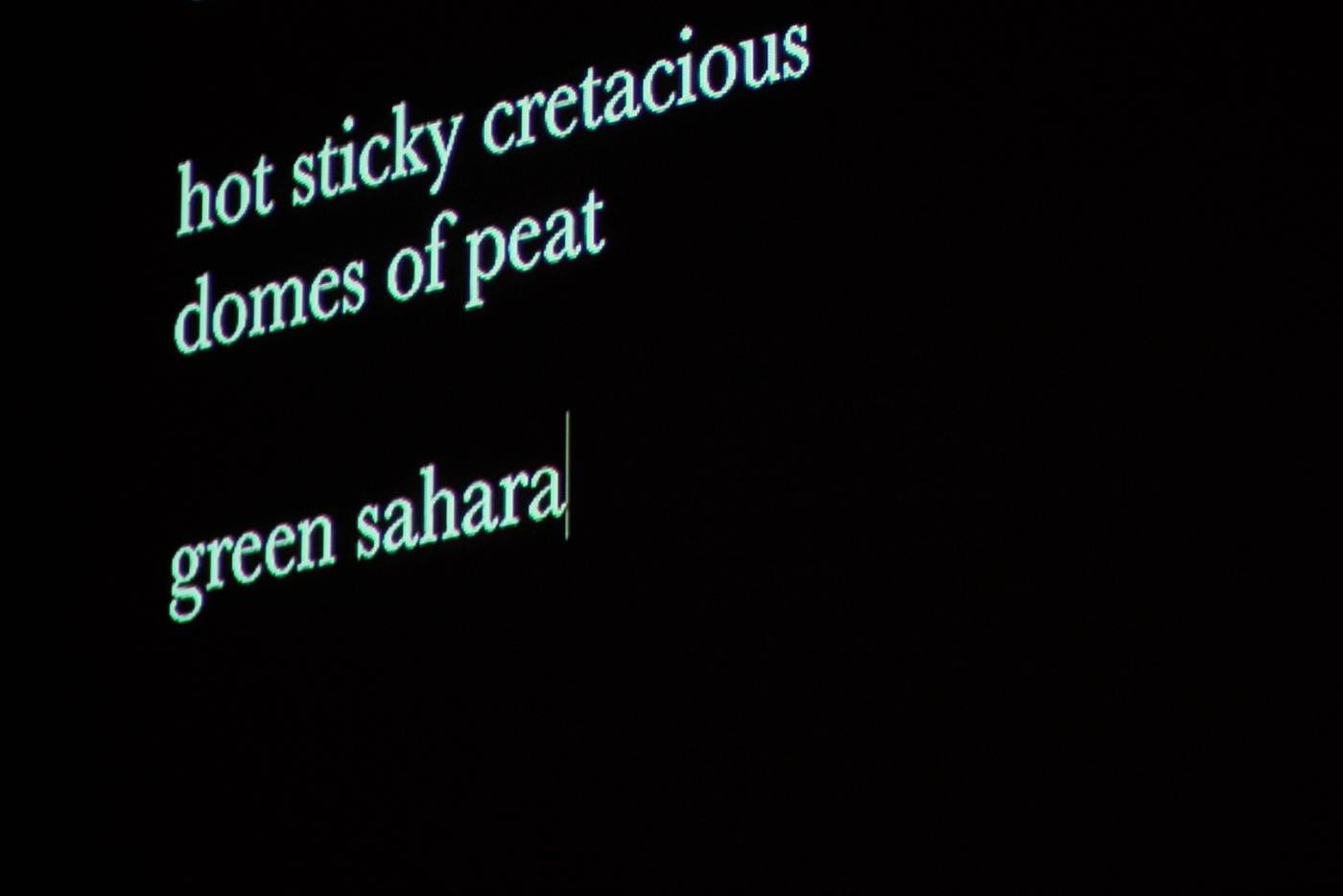About
With support from The Robert Rauschenberg Foundation and the Public Concern Foundation, Marfa Dialogues/NY featured two months of programming including community forums, art exhibitions, musical performances, and panels in New York City to engage a deeper examination of climate change. More than 30 of New York’s leading cultural and academic institutions participated in Marfa Dialogues/NY, hosting a variety of events ranging from an installation on the High Line to a food truck that will provide an unconventional serving of foods vulnerable to climate change. Ballroom Marfa presented an art exhibition of environmentally-engaged works at the Rauschenberg Foundation Project Space and orchestrated additional events with Marfa Dialogues program partners at that location.
Marfa Dialogues was initiated co-founded in 2010 by Fairfax Dorn, co-founder of Ballroom Marfa, a leading contemporary arts center in Far West Texas, and Hamilton Fish, president of The Public Concern Foundation (PCF), a New York non-profit devoted to the advancement of public education around social and political topics. Marfa Dialogues was originally conceived as a symposium to broaden public exploration of the intersection of art, politics and culture.
Programming partners included:
The Carbon Tax Center; The Center for Social Inclusion; Columbia University’s Earth Institute; Columbia University’s International Research Institute for Climate & Society; Cooper Union’s Institute for Sustainable Development; Gallery Aferro; High Line Art; IMC Lab & Gallery; Joe’s Pub at Public Theater; Mary Miss/City as a Living Laboratory; Materials for the Art; New School’s Center for New York City Affairs; NRDC; Sculpture Center; Socrates Sculpture Park; Storefront for Art & Architecture; Superhero Clubhouse and Triple Canopy.
Featured Events
- The Ballroom Marfa-curated visual art exhibition The Quiet Earth exhibition curated by Ballroom Marfa at Rauschenberg Project Space.
- Panel discussion that explored the implications of a possible U.S. carbon tax on the attitudes, beliefs, and practices of Americans with respect to energy use, consumption and the natural world at the Carbon Tax Center.
- GhostFood, a participatory performance at Gallery Aferro by Miriam Simun and Miriam Songster, that explored eating in a future of food scarcity and biodiversity loss brought on by climate change. GhostFood was a foodtruck that served, via wearable device, simulated taste experiences of foods threatened with extinction due to the effects of climate change.
- Solar, an exhibition featured works by Rosa Barba, Neil Beloufa, Camille Henrot, and Basim Magdy, explored the spectacle of nature and the sense of cosmic stupor that captures humans when faced with the sublime vastness of our planet at the High Line.
- Water Water Everywhere/Nay Any Drop To Drink, a multimedia song cycle performance by Nora York, an exploration of climate change and the world’s water supply inspired by George Fredric Handel’s Water Music at Joe’s Pub at the Public Theater
- CaLL/WALKS, a program of BROADWAY: 1000 Steps organized by Mary Miss/City as Living Laboratory, was a series of walks and panel discussions taking place along the length of Broadway between Bowling Green and 240th Street.
- In partnership with the NYC Center for Materials Reuse, MFTA hosted Waste Characterizations an analysis of the composition of donated items and volume of disposed waste. Findings from this study will result in an artists’ exhibit highlighting MFTA’s environmental impact and the value of reuse in NYC’s policies for climate change. To accompany the exhibit, a free public art workshop will be held to introduce the science of waste characterization and the concept of reuse to the NYC audience.
- Two of the leading voices on the issue of climate change—artist and honorary NRDC (Natural Resources Defense Council) Trustee Maya Lin and NRDC President Frances Beinecke—discussed the critical role artists, advocates and scientists play in addressing climate change, the role of art in mobilizing and educating the public, and the great potential for environmentally focused artwork to affect climate change policy.
- In collaboration with Pratt Programs for Sustainable Planning and Development’s RAMP Initiative, the Center for Social Inclusion presented Our Climate, Our City, Our Future: Hurricane Sandy One Year Later, a series of workshops at museums throughout New York City on recovery, adaptation, mitigation and planning with communities post-Hurricane Sandy.
- Solo exhibition of Danish artist Tue Greenfort at SculptureCenter whose interdisciplinary practice deals with issues such as the public and private realm, nature and culture.
- 2013 Emerging Artist Fellowship Exhibition at Socrates Sculpture Park featured 15 new commissions by emerging artists including work by NY-based artist David Brooks, who with a team of horticulturalists at Plant Specialists introduced a series of green roofs atop shipping containers that have been an architectural staple within the park for over two decades. Additionally on view was tree wood by Toshihiro Oki architect pc and a Broadway Billboard by Wangechi Mutu.
- Two roundtable discussions–Speculations (On Nature) and Speculations (The Climate)–as part of Triple Canopy’s Speculations, an ongoing investigation of the future and the demands it makes on the present day. The discussions considered climate-change adaptation and mitigation from scientific and artistic perspectives and survey a range of viewpoints on ecology and nature.
